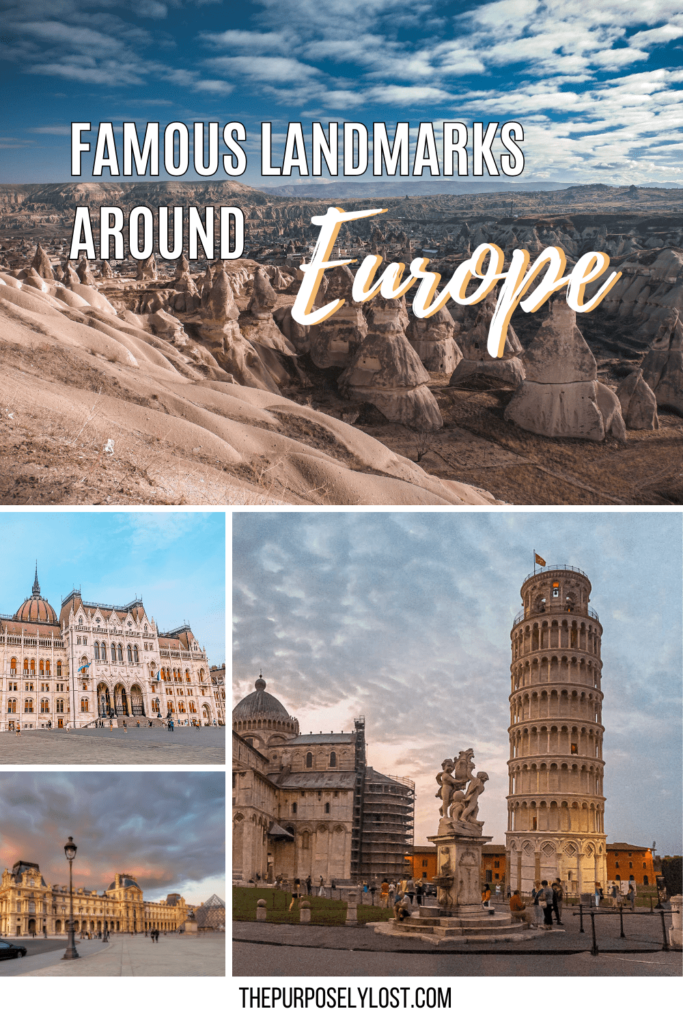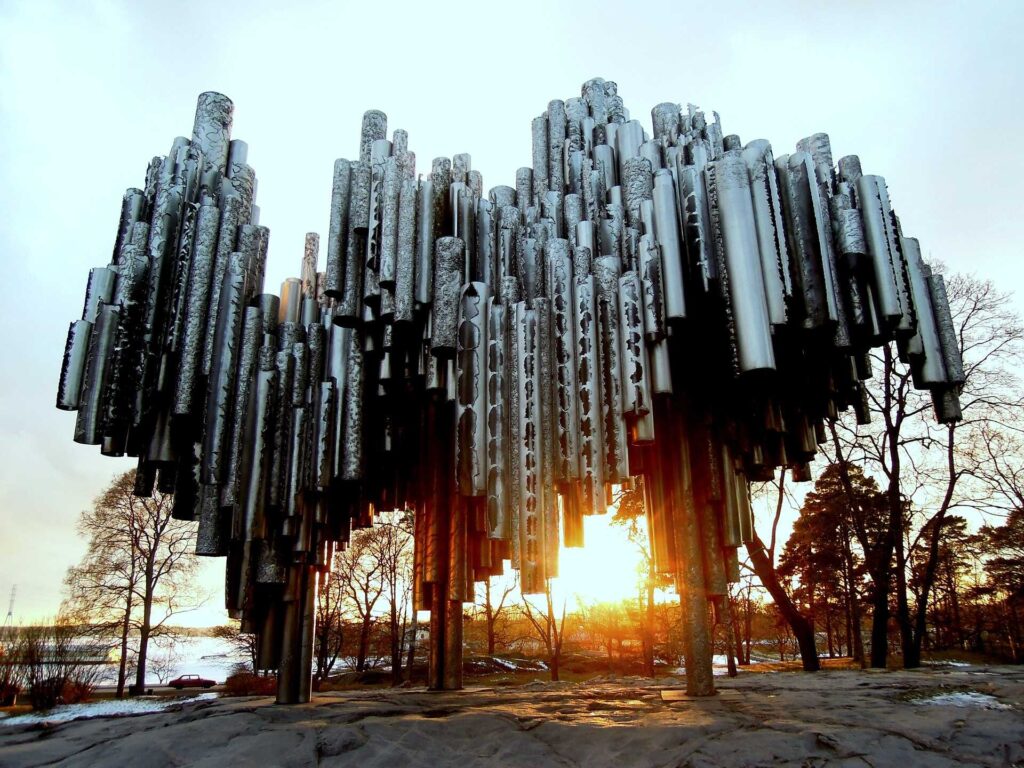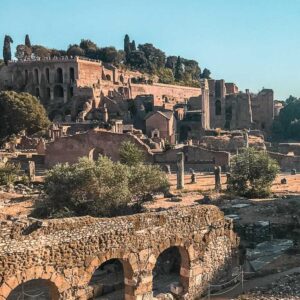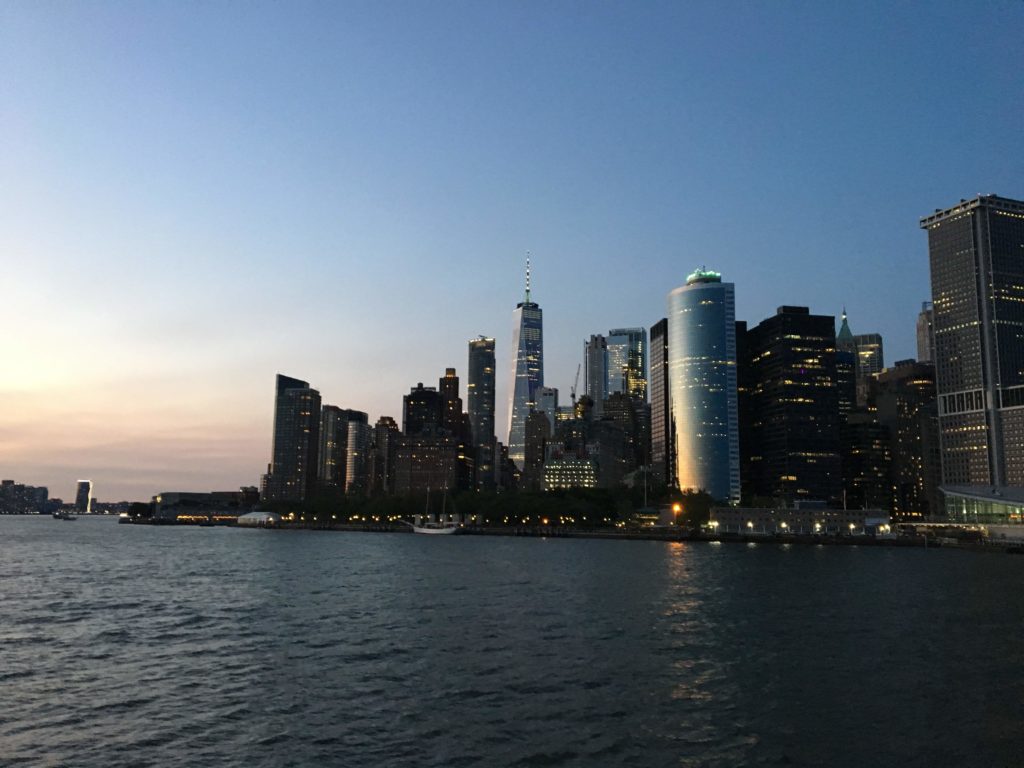Contents
- 1 Thingvellir National Park
- 2 Spike Island
- 3 Cliffs of Moher
- 4 Stonehenge
- 5 Avebury Circle
- 6 Minack Theatre
- 7 Buckingham Palace
- 8 Elizabeth Tower
- 9 Tower of St. Vincent
- 10 Pena Palace
- 11 The Alhambra
- 12 Mezquita Mosque–Cathedral of Córdoba
- 13 Eiffel Tower
- 14 Arc de Triomphe
- 15 Cathédrale Notre-Dame de Paris
- 16 Louvre Museum
- 17 Palace of Versailles
- 18 Mont Saint-Michel
- 19 Leaning Tower of Pisa
- 20 Roman Forum & Palatine Hill
- 21 Pantheon
- 22 Apostolic Palace
- 23 St. Peter’s Basilica
- 24 Mdina
- 25 The Lion of Lucerne
- 26 Jungfraujoch
- 27 Suomenlinna
- 28 Sibelius Monument
- 29 Camp Westerbork
- 30 Brandenburg Gate
- 31 Neuschwanstein Castle
- 32 Auschwitz-Birkenau Concentration Camp
- 33 Wawel Castle
- 34 Wieliczka Salt Mine
- 35 Schönbrunn Palace
- 36 Parliament of Budapest
- 37 Buda Castle
- 38 Franja Partisan Hospital
- 39 Bled Island
- 40 Walls of Dubrovnik
- 41 Mostar Bridge
- 42 Mykonos Windmills
- 43 The Acropolis of Athens
- 44 Bran Castle
- 45 Sighisoara Citadel
- 46 Cappadocia
- 47 Old Town Tallinn
- 48 The Kremlin
- 49 Moscow Metro
This post may contain affiliate links! I will receive a commission, at no extra cost to you, if you purchase something recommended here.
With hundreds of UNESCO World Heritage Sites, Europe has some of the oldest and most iconic monuments on the planet.
From the historic city walls of Dubrovnik, Croatia, to the Colosseum’s incredible architecture in Rome, Italy, here are some of the most famous landmarks in Europe.
Map for this guide
A UNESCO World Heritage Site is a creation or landmark chosen for conservation by the United Nations Organization for Education, Science and Culture (UNESCO) due to its cultural, historical, scientific or natural significance. It must meet a minimum of one of ten selection criteria to be considered for the World Heritage List, and once chosen, it becomes protected for preservation by various international treaties.
Western Europe
Thingvellir National Park

Thingvellir National Park is located about 50km from Reykjavík, Iceland. In 2004 it became a UNESCO world heritage site for its cultural and natural history.
In 900 A.D., the first settlers in Iceland started to form a general assembly, and the first Icelandic Parliament, or Althing, was held in 930 A.D. in the valleys of the national park. In the center of the gathering is the Law Rock, with thousands visiting from around Iceland each year.
As well as its historical significance, Thingvellir National Park is geologically significant. It is one of the few famous places in Europe where the two tectonic plates can be seen, forming the Mid-Atlantic Ridge.
Thingvellir National Park is part of the Golden Circle, and all tours from Reykjavík will include a stop here to view the canyon formed between the plates. It is an easy drive from Reykjavík, so a hire car is an option that gives you more time and flexibility to visit.
At Thingvellir, take time to look from the visitors center down into the canyon. Then, follow the marked paths to the trail through the canyon to find the waterfall at the far end. It’s then just a short walk to the picturesque church on the shore of the lake. This is also where you will find the Silfra Fissure, a crack between the tectonic plates where it is possible to snorkel or dive.
To make the most of your visit to Thingvellir National Park, it is best to go very early in the day, before day trippers from Reykjavík arrive, or later in the afternoon. If you drive the Golden Circle in a day, make the Thingvellir National Park one of your last stops as the tours usually stop here in the mornings.
Submitted by: Suzanne from Meandering Wild
Spike Island
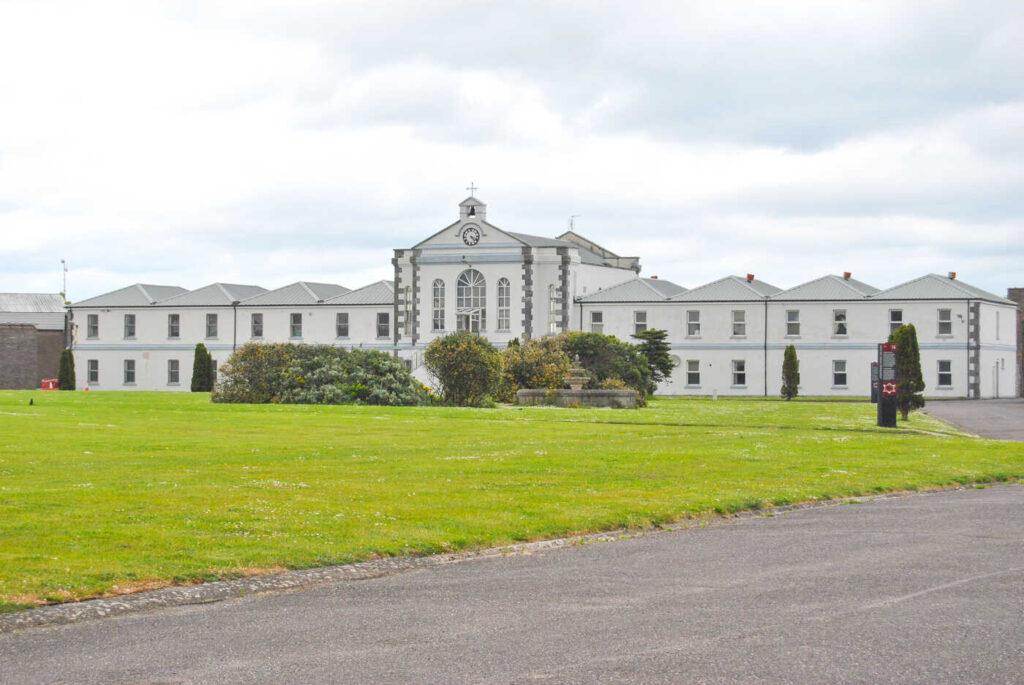
Exploring the southern coast of Ireland is a must when traveling in Ireland. It is home to many historical landmarks in Europe, ranging from military forts to old castles, but none with a history like Spike Island.
Originally a monastery built in 635 A.D., it was transformed during the great famine in 1847 to be the largest prison ever built in Ireland or England up to that point. Due to British colonialism, Spike Island was utilized as a temporary hold for those awaiting transport to British settlements worldwide.
It is now home to a fortress that spans over 24 acres and is currently one of Ireland’s biggest tourist attractions. A short but beautiful boat ride from Cork Harbor will bring you to the island, housing Ireland’s most extensive weapons collection, where you can see tanks, cannons, and guns used in the wars.
Get a more in-depth look into Ireland’s incredible history by taking a tour of the multiple prison sections inside, like The Cromwellian Prison, Famine Era Prison, and even the punishment blocks for Ireland’s most dangerous youths.
A great tip for planning a visit to this beautiful site is to arrive in mid to late April. A charity 5km walk/run event is held every year and gives you a unique look at the island, its fortress, and the animals that call it home.
Submitted by: Ciaran from Maptrekking
Cliffs of Moher
- Location: Lahinch, County Clare, Ireland
- Find places to stay near the Cliffs of Moher: Hotels | Airbnb
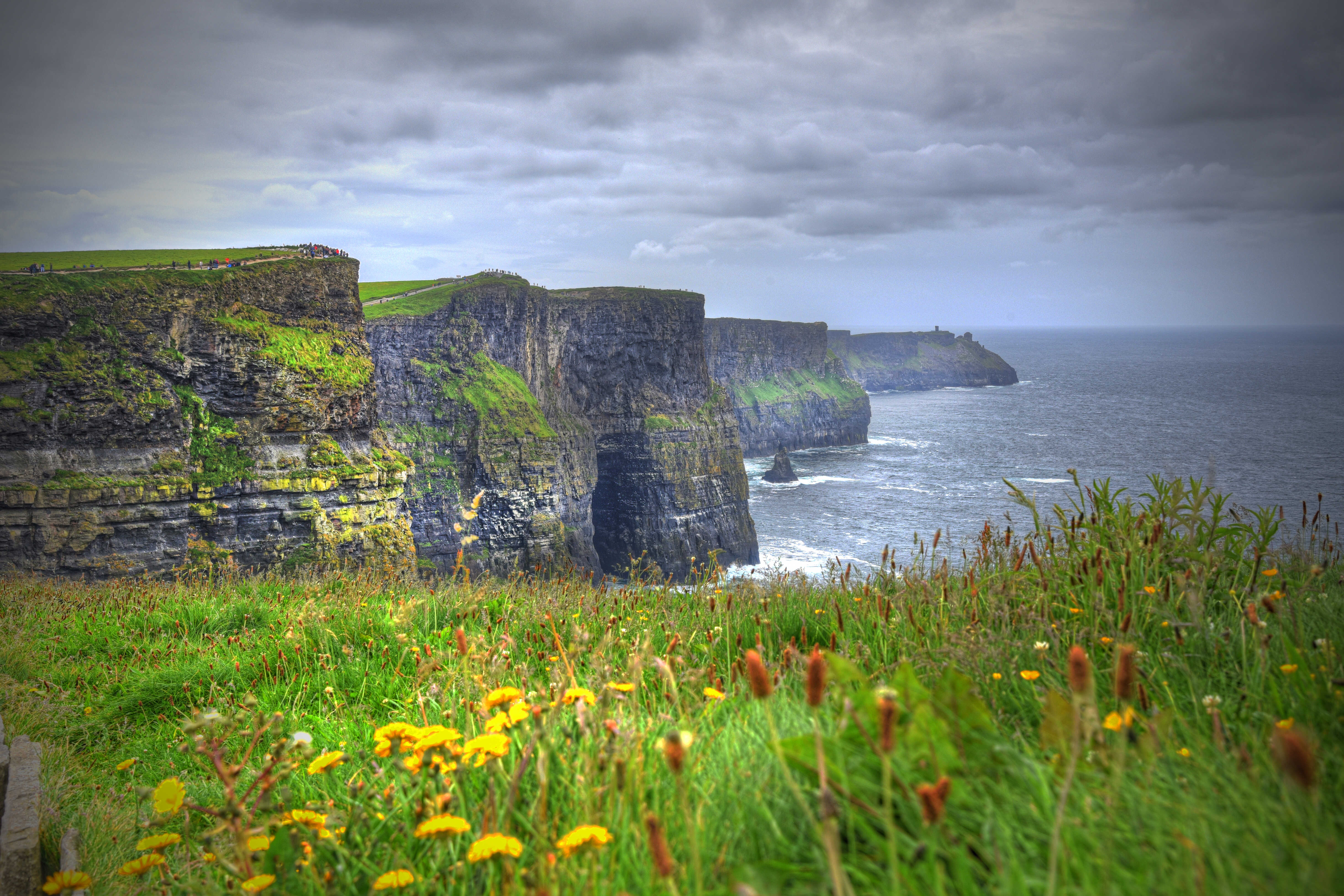
The Cliffs of Moher are one of the most famous landmarks in Europe, known for their beauty and history. Located on the west coast of Ireland in County Clare, the Cliffs of Moher are made up of hard shale and sandstone rocks and have been featured in several movies, most famously serving as the Cliffs of Insanity in The Princess Bride.
Standing at more than 700 feet tall, the cliffs stretch for miles and boast a dramatic view of the sea. There are several areas where visitors can park and stroll along the cliffs’ edge, but they’re best viewed from the stone O’Brien’s Tower, which was built near the tallest peak of the cliffs by Sir Cornelius O’Brien in 1835.
It’s also possible to hike the cliffs, but it’s best to do it with a guided tour. These tours will provide you with a guide who knows the area; remember, tourists have injured themselves and have even died falling off the cliffs. The cliffs are very steep and drop off into the ocean, so it’s not a good idea to venture to the very edge.
Stonehenge

Stonehenge in Wiltshire, England, is a famous landmark in Europe for every visitor to the U.K. The Neolithic structure was constructed over five thousand years ago, but the stones are even older.
The layout consists of two big stone circles, one inside another. It’s believed that the outer circle has been used to capture the movements of the sun. It’s also speculated that the grounds were used for burial or religious purposes.
Even though there are other prehistoric rock formations in the region, Stonehenge’s size and mystery render it extraordinary. Add to the fact that the site was misused for years as a military training area, the remarkable structure still remains. Stonehenge was restored throughout the 20th century to make it possible for tourists to walk through the stones.
Since you’re in the countryside, you can also explore the nearby area and town of Salisbury. It’s a great place to walk around and enjoy the landscape.
Avebury Circle
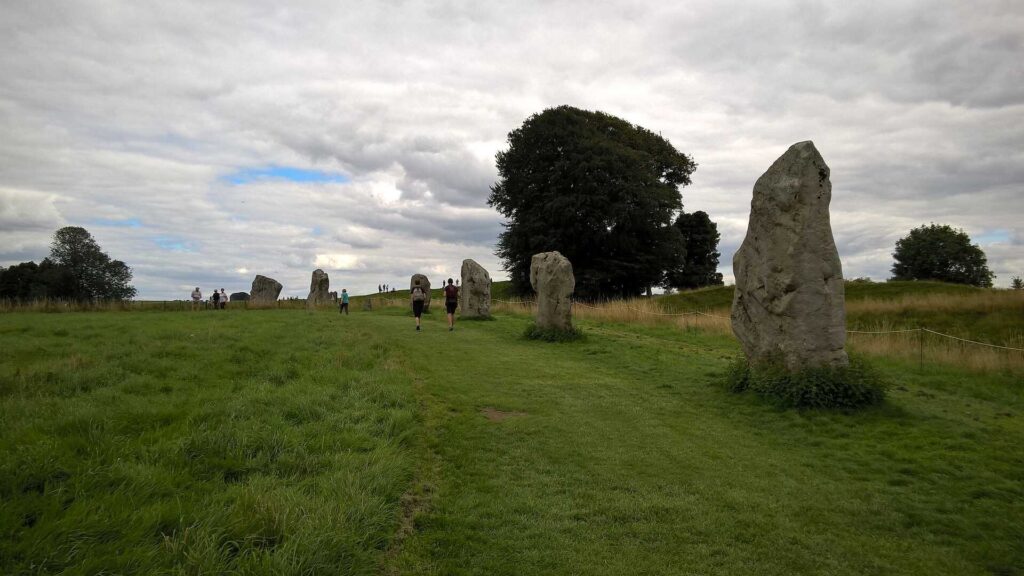
While not as famous as Stonehenge, the Avebury stone circle is roughly contemporary, dating from about 2500 B.C. to 2000 B.C. The UNESCO site is one of Britain’s largest surviving Neolithic henge monuments.
The whole site is divided into four quadrants, and you can visit them one after the other in a single circuit of the circle. Walking the landscape is a must–once to the henge bank’s top and once close to the stones. There are so many stories and legends about it, and you would just keep on wondering what all might have happened there.
While you are there, don’t miss the West Kennett Long Barrow, a Neolithic passage tomb. As the biggest man-made hill in Europe, Silbury Hill is also worth exploring. Avebury Manor is nearby as well, the former home of Alexander Keiller, the architect who brought Avebury’s archeology into sight.
Driving is probably the best way to get to Avebury, but you can also take a train to Swindon or Pewsey and take a taxi or bus to Avebury from there.
There are no entry fees to see the stones, but The National Trust charges £7 for parking all day. If you are not going in the dry season, definitely take waterproof shoes or walking boots.
Submitted by: Deb from Spanish Latin America
Minack Theatre

The Minack Theatre is located in the far southwest of Cornwall in England. The theatre is open air and was carved by hand out of the Cornish granite cliffs by Rowena Cade and her gardener in the winter of 1931. Rowena Cade continued work on the theatre all of her life, and it is an impressive sight to behold.
The theatre is around 10 miles from Penzance and about 40 miles from Newquay; it is best reached by car. The Minack puts on a broad range of shows, including opera, Shakespeare, and light-hearted children’s performances. Performances are held in all weather conditions, so the audience must come prepared. Below the cliffs, pods of dolphins often upstage the performers by leaping through the Atlantic Ocean’s waves.
There’s a small museum where visitors can learn about the theatre’s history, and there are lush gardens to wander through. While you’re visiting the Minack Theatre, a steep cliff path next door brings you down to the stunning Porthcurno Beach, the perfect spot to while away an afternoon before or after a show.
The Minack Theatre sees around 170,000 visitors per year, some coming to watch a performance, others coming to marvel at this unique creation by a woman with an incredible vision.
Submitted by: Annabel Kirk from Smudged Postcard
Buckingham Palace
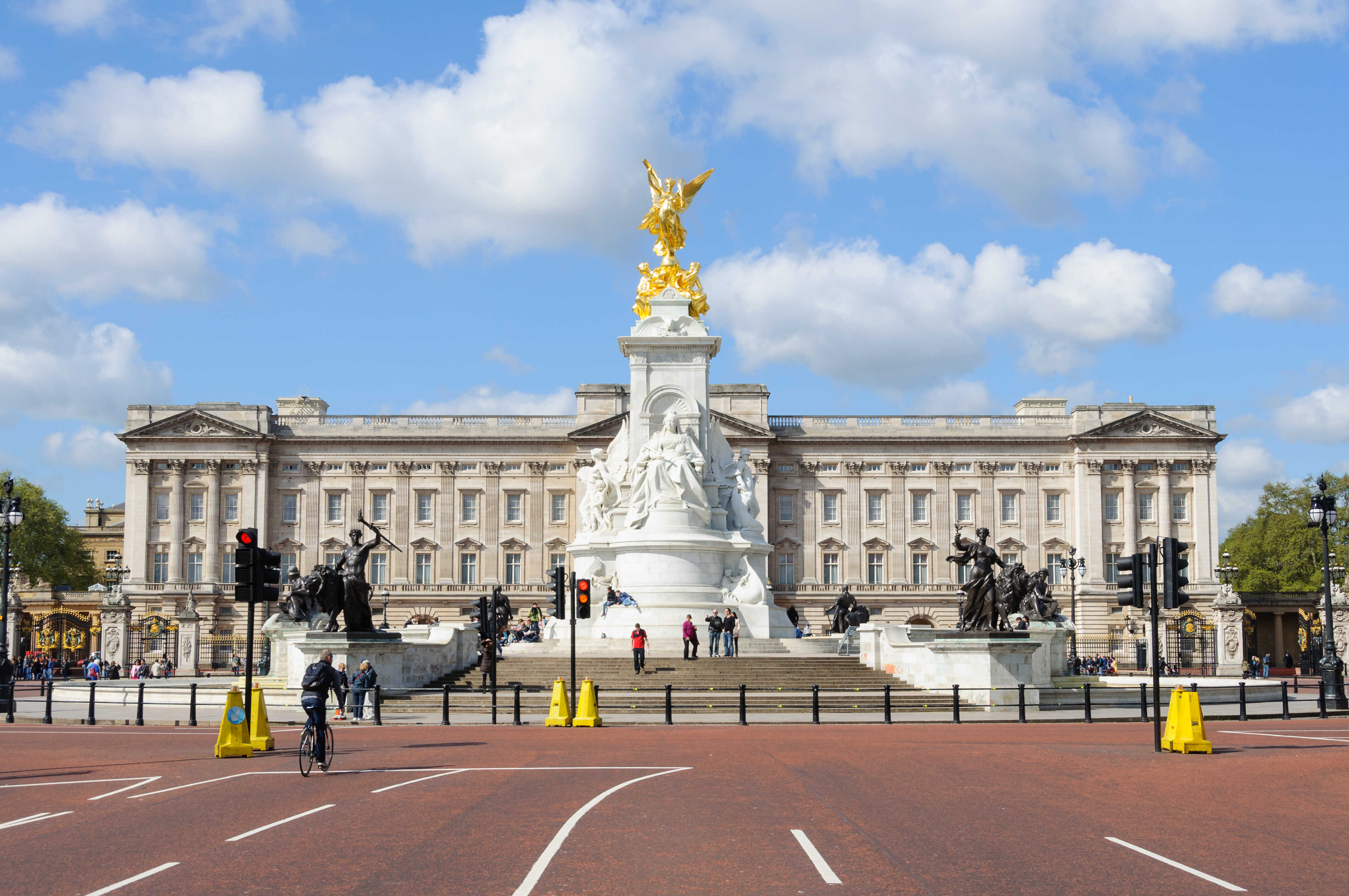
Buckingham Palace has been the English monarch’s official London residence since 1837, and it’s one of the most famous buildings in Europe. The British monarchy has lived here since Queen Victoria moved in during the 19th century.
This London landmark has been the location of ceremonial occasions such as state dinners, weddings, coronations, reception of foreign ambassadors, the Changing of the Guard ceremony, and many other significant events throughout British history. Today, the palace is famous for its beautiful gardens, but the royal private apartments remain off-limits to visitors.
With more than 700 rooms, the building has a long and storied history. The palace was originally a townhouse built for the Duke of Buckingham in 1705, but it was enlarged and turned into an official royal residence by King George III in 1761. It was also severely damaged by German bombs during World War II.
If you’re visiting London today, a Changing of the Guard ceremony at Buckingham Palace is a must-see experience. Spanning from Buckingham Palace to St James’s Palace and the Wellington Barracks, the ceremony takes about an hour and is held year-round. You can find updated timing information for the ceremony or take a virtual tour on their website.
Elizabeth Tower

The Elizabeth Tower is one of the most iconic structures in the United Kingdom, and it has a fascinating history. It’s the central tower of the Palace of Westminster in London, commonly known as the Houses of Parliament.
Once officially known as St. Stephen’s Tower during Queen Victoria’s reign, and then simply the Clock Tower, it was renamed Elizabeth Tower in 2012 to honor Queen Elizabeth II’s diamond jubilee–60 years as queen. When it was completed in 1859, it was one of the largest and most accurate four-faced striking and chiming clocks globally.
The 756-foot tower is not only the centerpiece of the London skyline, but it’s also home to a famous bell–Big Ben. Originally named the Great Bell, the bell’s nickname Big Ben might have come from the man who installed it, Sir Benjamin Hall.
If you want to tour the tower, you can book a guided tour or explore the space on your own. If you’re going to include the tower on your visit to the city, be aware that it is not open every day. To arrive, take the underground to Westminster Underground Station and walk to the Thames River.
Tower of St. Vincent

The Tower of St. Vincent, also known as Belém Tower, is a fortified tower at the Tagus River’s mouth in Santa Maria de Belém, Lisbon, Portugal. The structure is one of Lisbon’s most recognizable monuments.
Designed in the Portuguese Late Gothic Manueline style, the tower is a massive square, ashlar building with five floors and two small terraces on each corner. It features intricate designs, including a depiction of the rhinoceros, a first of its kind in Western art.
Built in the early 16th century by King Manuel I of Portugal’s order, it served as a beacon for ships approaching Lisbon, then became a lighthouse and customs house. It was classified as a UNESCO World Heritage Site in 1983 along with the nearby Jerónimos Monastery and sits close to the official Presidential residence, Belém Palace.
You can either purchase tickets onsite or take a guided tour that includes a stop to explore the tower.
Pena Palace

Portugal is home to many famous landmarks in Europe, but the most interesting is the vibrant Pena Palace. Perched on a hill in Sintra, Portugal, one of the country’s prettiest cities, it’s a UNESCO World Heritage Site and a Seven Wonders of Portugal.
Pena Palace was established in the 19th century by King Ferdinand II, even though it was built on a medieval monastery’s remains. The architectural style combines Moorish Revival, Neo-Gothic, Neo-Manueline, and Renaissance architectural styles, with its vivid colors and stunning panoramic views. It’s especially famous for its facade, which includes thousands of azulejo tiles creating intricate designs.
When you visit Pena Palace, depending upon the type of ticket you choose, you can walk all over the terraces, several interior rooms, and the 200 acres of Pena Park.
Sintra itself is a quick day trip from Lisbon by car, train, or a guided tour. While it is not encouraged to rely on finding open parking, the palace is accessible by car, or take the bus or train from the city center.
Read More:
- The Best Palaces in Europe to Visit
- Your Guide to Incredible Religious Places in Europe
- The Most Remarkable Ancient Places in Europe
- Your Guide to the Best European Winter Destinations
- Top Tours in Europe
The Alhambra

The Alhambra is a castle complex located in Granada, Andalusia, Spain, which millions of tourists visit every year. This stunning palace and UNESCO World Heritage Site was founded on an ancient Roman fortress’s remains in the mid-13th century. It then became the royal residence for the Sultan of the Emirate of Granada, who adorned the building with elaborate details, including the stunning Nasrid gardens, one of the features the Alhambra is famous for.
After Spain was reconquered by King Ferdinand and Queen Isabella, the Alhambra became their home and was transformed for the Renaissance. Unfortunately, since its height, the palace has deteriorated into shambles and has been used as a haven for vandalists. The interior spaces were emptied, and the formally elegant structure appeared unidentifiable.
However, Granada began renovating Alhambra when it was brought back into public interest with Washington Irving’s The Tales of the Alhambra. It was converted into a museum and added to the UNESCO World Heritage Sites register in 1984. Tickets to the Alhambra are sold out months in advance, so make sure you make reservations well ahead of time.
Mezquita Mosque–Cathedral of Córdoba
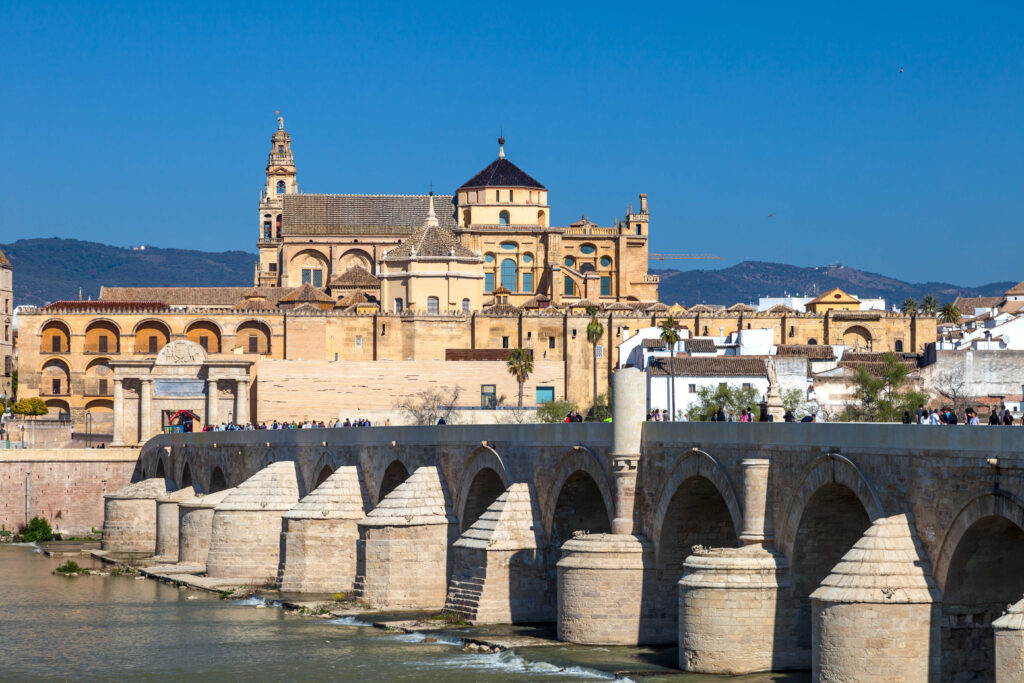
Throughout its history, areas of Spain were ruled by Muslims. Because of this history spanning thousands of years, the Mezquita Mosque-Cathedral of Córdoba is one of the most interesting historical landmarks of Europe.
The Great Mosque was built initially on a Visigothic Christian church site in the 785 A.D. as an Arab-Muslim place of worship. However, when Christians reconquered the area during the Reconquista, it was converted into a Catholic cathedral in 1236.
Intricately designed, most of the mosque’s original Islamic architecture is still intact, and it’s a remarkable precursor to what became known as Moorish architecture. Visitors today can even go inside to explore its medieval cloisters and check out its beautiful Moorish-Mudéjar style.
Since the Mosque-Cathedral is a UNESCO World Heritage Site, it’s well worth your time to visit if you’re in the area. You can find updated information on their hours of operation and purchase entrance tickets to the building and the bell tower on their website.
Eiffel Tower

The Eiffel Tower is one of the most famous European landmarks and a must-see for any trip to Paris. It was constructed in 1889 as the entrance arch to the 1889 World’s Fair. French engineer Gustave Eiffel built the tower to be the tallest man-made structure in the world, and it held that title until 1930 when the Chrysler Building was built in New York City. The Eiffel Tower stands at the height of 324 meters to its tip.
Gustave Eiffel, the Eiffel Tower architect, also designed the inner framework of another iconic landmark–New York City’s Statue of Liberty.
To many, the Eiffel Tower symbolizes romance, Paris, and its image has been featured in films, songs, and artwork around the world. It’s instantly recognizable and a showcase of 19th-century engineering marvels. Nicknamed the “Iron Lady,” more than 18,000 iron and steel pieces and 2.5 million rivets were used to build the tower in just over two years.
Although it was initially supposed to be torn down after 20 years, its popularity saved the structure. More than 300 million people have paid to climb to the top in its 120 years standing, making it one of the most-visited paid monuments in the world.
Arc de Triomphe

Another popular Parisian attraction is the Arc de Triomphe. It’s located at one end of the Champs-Élysées and at the center of a larger star-shaped intersection with avenues radiating out toward the city’s far-reaching corners. The monument was the largest triumphal arch in the world until the Monumento a la Revolución was completed in Mexico City in 1938.
Emperor Napoleon wanted to build a monument to honor France’s fighting men who fought in the country’s many wars from the French Revolution through the Napoleonic Wars. Construction began on the Jean-François-Théodore Chalgrin designed arch in 1806 but wasn’t completed until the 1830s due to unrest caused by the Bourbon Restoration.
Inspired by the Arch of Titus in ancient Rome, the Arc de Triomphe is 50 meters tall and has two floors. It takes 284 steps to climb to the observatory at the top, and while the mid-level features a small museum.
Cathédrale Notre-Dame de Paris

The Notre-Dame Cathedral, a UNESCO World Heritage Site and one of the most famous landmarks in Europe, was designed as Paris’s centerpiece and is regarded as one of the finest examples of French Gothic architecture. In the 12th century, the Bishop of Paris commissioned the cathedral, and construction was completed by 1345.
Located along the Seine River, the cathedral’s iconic two towers are recognizable from several places throughout Paris. The cathedral is renowned for its gargoyles, its four-ton bell called “Emmanuel,” and the famous 77-bell carillon in its bell tower. It’s also legendary for its three rose-shaped stained glass windows, three enormous organs, and the interior labyrinth.
The famous church underwent several changes and was severely damaged during the 1790s from the French Revolution. However, when The Hunchback of Notre Dame by Victor Hugo was published in 1831, the cathedral encountered a resurgence of interest, and a massive renovation program began.
On April 15, 2019, the cathedral’s top caught fire due to ongoing renovation work on the cathedral. The spire and some of the interior experienced significant damage. Although the building itself and numerous historical objects have survived, the church and the surrounding neighborhood are still closed for reconstruction.
Louvre Museum

The Louvre Museum in Paris is the largest art museum–and one of the most-visited–in the world. It’s home to more than 35,000 works of art, ranging from antiquity to the late 19th century. What started off as a gallery housing King Louis XIV’s growing art collection has become a sprawling complex set in a series of former royal palaces.
It was initially constructed as the Louvre Palace in the 12th century and served as the principal residence for the French royal family from the 1540s until 1682 when King Louis XIV decided on the Palace of Versailles as his primary home. Instead, the Louvre Palace would be to showcase his royal art collection. The Louvre Museum as we know it today officially opened in 1793.
Since its opening, the collection has grown to include pieces from all over the world. The museum’s selection includes everything from Greek and Roman artifacts to Renaissance, Baroque, Impressionist paintings, and world-renowned works like Leonardo da Vinci’s masterpiece the Mona Lisa and the Ancient Greek statue Venus de Milo.
The Louvre Museum is easy to access by bus, metro, car, and even bike from just about anywhere in Paris. Entrance to the Tuileries Garden is free, but you need to purchase tickets to enter the museum or the Musée Eugène-Delacroix, either online or when you arrive.
Palace of Versailles
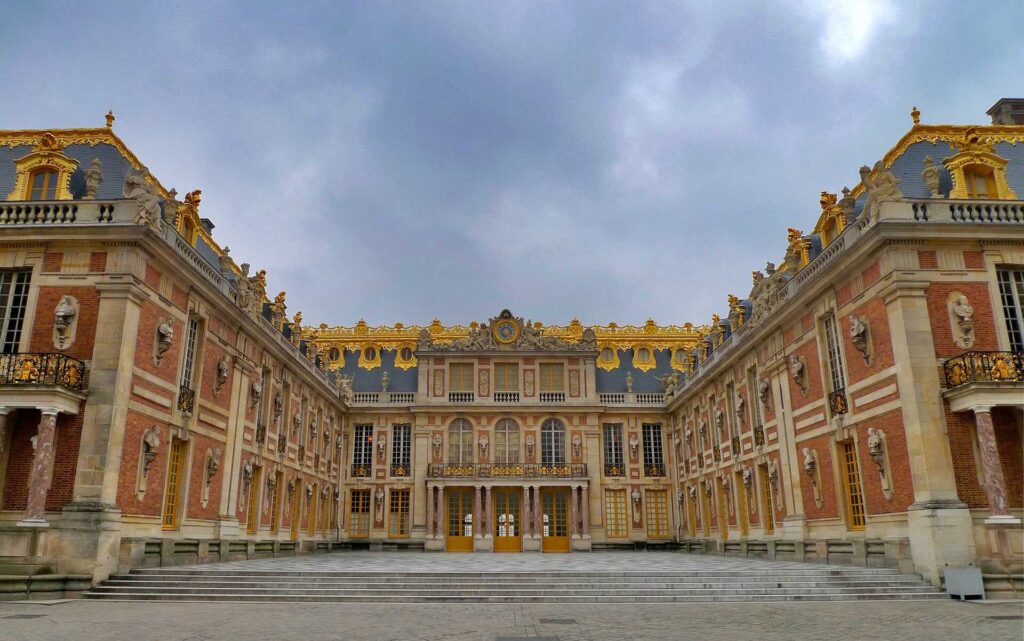
The Palace of Versailles is a royal residence in Versailles, France. It was initially built by King Louis XIV, the “Sun King,” as a hunting lodge for his family. In 1682 he decided to make it more suitable for his needs as a king. The palace has 775 rooms, and it is visited by more than five million people each year. The palace was home to three French kings and was center stage for several historical events and celebrations until the French Revolution.
The palace is best known for its architecture, designed by French architect Jules Hardouin Mansart. Created in the French Baroque style, Versailles is a considerable estate, and you’ll need a whole day to explore the grounds. You’ll find the Royal Palace and the Trianons inside, as well as the Kings’ rooms and several reception areas, like the famed Hall of Mirrors.
Outside, you’ll find lovely French-style gardens adorned with fountains, other water features, and an expansive park. The gardens circle the estate on three sides and are free to enter from November to the end of March. Although they charge admission fees during the warmer months, they also host numerous music and water displays on the grounds during this time.
Mont Saint-Michel

The Benedictine abbey of Mont Saint-Michel is among the most famous landmarks in Europe. The commune of Mont Saint-Michel is a rocky tidal island in Normandy, France, located only one kilometer from the country’s north-west coast, at the mouth of the Couesnon River near Avranches.
The island of Mont Saint-Michel is best known for its high tides. The rising water turns the abbey into a stunning island during a high tide, but when it’s low tide, the impressive buildings that make up the abbey are all linked by cobbled pathways and surrounded by ramparts.
Mont Saint-Michel is a combination of various Gothic styles suited to the unique geography of the site. Dedicated to Saint Michel, patron saint of pilgrims, Mont Saint-Michel rose to become one of the most famous pilgrimage places in Christianity throughout the Middle Ages and was defended by kings and local lords. There has been a holy site in this area since the 8th century but has developed over time.
The easiest way to visit Mont Saint-Michel is on a road trip to Normandy or a guided tour from Paris.
Leaning Tower of Pisa

One of the most famous landmarks in Europe, the Leaning Tower of Pisa, is an iconic bell tower in Italy. When you arrive in Pisa, head to Piazza dei Miracoli, where you’ll discover the Leaning Tower. However, it’s only one of several historical landmarks in Europe on the site. Translated to the Field of Miracles, Piazza dei Miracoli is an expansive open grassy area featuring the Leaning Tower, as well as the Cathedral, the Baptistry, and the Cemetary.
The Leaning Tower was designed to be the bell tower of the adjacent cathedral. When the second floor was added in 1178, the building started to sink almost immediately due to a weak foundation and soft subsoil beneath the tower. Over time, the sinking foundation shifted the tower’s weight, causing it to lean. The lean increased when successive generations of builders dug deep into the ground in an attempt to stabilize the tower. By 1990, the building retained an upright tilt of 5.50 degrees. After repairs were undertaken in 2001 to improve its base, the tower now rests securely at a tilt of 3.97 degrees.
You can buy tickets to climb the tower ahead of time for around $43, or take a guided tour of the Piazza dei Miracoli, with entrance included. It’s also very easy to take a day trip to Pisa to see the complex from major Tuscan cities like Florence or Siena.
If you only take a day trip to this city, here’s your guide to Pisa in one day!
Roman Forum & Palatine Hill
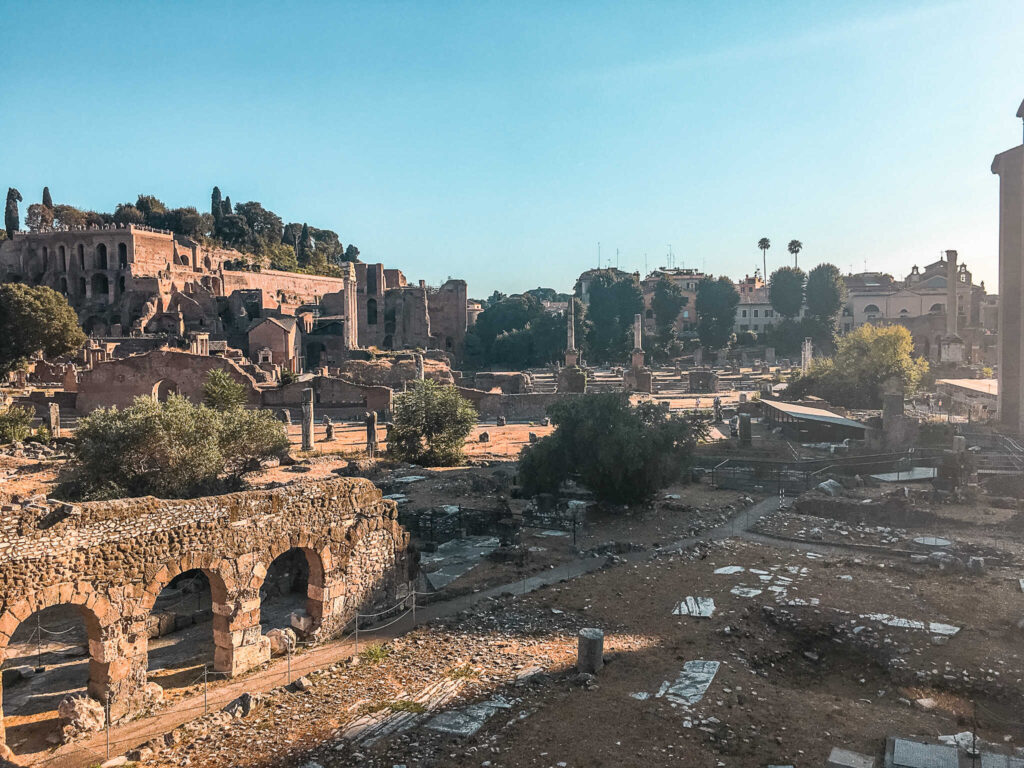
Located in ancient Rome’s center, the Roman Forum was the marketplace to the Roman Empire’s capital, surrounded by churches, government offices, and other public buildings. It had been the most important commercial, political and religious site globally, and today it’s one of the most famous landmarks in Europe.
For decades, the Roman Forum had become the center of public life and political action in Rome, where people watched speeches and criminal trials.
You’ll see impressive ruins when you stroll through the ancient city streets under several high arches and columns overhead. Sites include the Temple of Vespasian and the remaining columns of Titus, the victorious Arch of Titus, and Trajan’s Market, which was a vast, open-air, four-story commercial area covered by a wide portico.
You can also climb Palatine Hill, the centermost of the Seven Hills of Rome and one of the old city’s earliest parts. Many royal homes have been built there, and Roman legend explains that it’s the site of Lupercal, the cave where Romulus and Remus were discovered and kept alive by Lupa, the she-wolf.
Visit historic structures and sculptures wandering through the Roman Forum, or look at artifacts at the Palatine Museum; you can even take a guided tour of the sites. Don’t forget to visit another famous Roman site next to the Forum–the Colosseum.
Pantheon

Currently a Catholic church, the Pantheon is an ancient Roman temple in Rome, Italy, preserved for nearly 2,000 years. It’s best known for its enormous dome, the largest in the world for centuries after it was built.
A stunning piece of architecture, it’s the best-preserved building from ancient Rome. When it was initially built around 27 B.C. during Emperor Augustus’ reign, the Roman Empire was at the height of its glory. Augustus decided to construct the Pantheon as a temple to honor the Romans’ many gods, and then it was rebuilt by Emperor Hadrian around 126 A.D. But when the Roman Empire converted to Christianity, it was transformed into a Catholic church. Today, the structure is a museum.
The building is beautiful in its simplicity. The Pantheon exterior has a large, porticoed square porch in front, a triangular pediment above the main door, and decorative Corinthian columns. The interior is a single circular space with a columned portico that faces a circular domed room.
The Pantheon’s iconic dome at the top is a large concrete hemisphere with a circular opening, which lets in light from above and is the perfect blend of form and function. The dome’s internal structure is complex, but it’s one of the best examples of concrete strength.
You’re welcome to visit the Pantheon at any time during its open hours since the entrance is free and there are no timed tickets.
Tip: Most Roman Catholic churches in Italy require women to cover their shoulders and knees before entering, so make sure you keep a light scarf or cover-up in your day bag.
Apostolic Palace
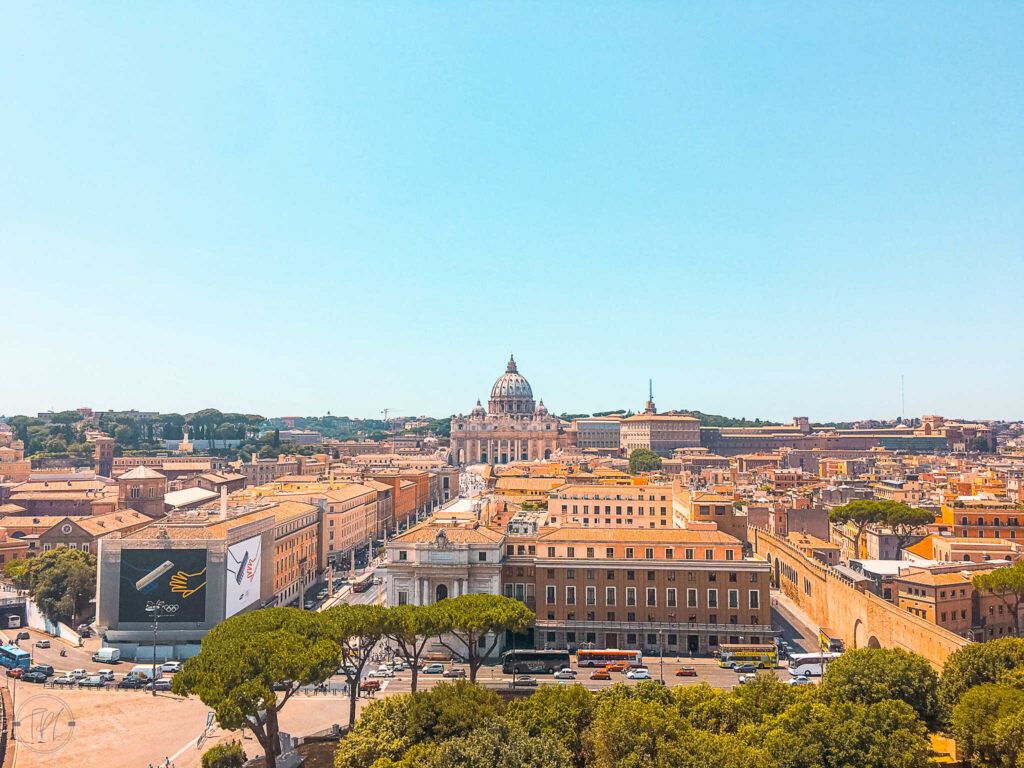
The Apostolic Palace is the official residence of the Pope within Vatican City, an independent city-state geographically within the city of Rome, Italy. The palace has been the seat of the papacy since the 16th century, replacing the previous papal residence, the Lateran Palace, which is still used as a secondary home.
Construction on the current Apostolic Palace began in the late 15th century after the previous Vatican palace was demolished from fire damage. Several famous Renaissance artworks live on inside the palace, including Pinturicchio’s frescos in the Borgia Apartments, Raphael’s frescoes in the Raphael Rooms, and frescoes by Michelangelo, Sandro Botticelli, Domenico Ghirlandaio, and others in the Sistine Chapel.
Today’s palace comprises a number of individual buildings dedicated to the Pope, senior officials, and administrative buildings. Only a few of these buildings are open to the public, like the Vatican Museums, the Vatican Library, and the Gardens of the Pontifical Villas. You can take a tour of the palace by booking a ticket at the Vatican’s website.
St. Peter’s Basilica

Although Vatican City is the smallest nation globally, it’s also home to one of the world’s largest Catholic churches. St. Peter’s Basilica is the biggest cathedral on the planet and the heart of the Catholic Church.
St. Peter’s Basilica has been the center of the Papal state for more than 1,600 years and is a constant source of amazement for visitors from around the globe. The immense church was established on the former site of the Circus of Nero, where St. Peter, one of the twelve apostles of Jesus and the first Pope, was crucified and buried in 64 B.C.E. by the Roman Emperor Nero. Standing in the middle of the piazza even today, the Egyptian obelisk was there during his crucifixion.
The new Basilica of St. Peter is considered to be one of the finest works of Renaissance architecture and construction and built directly on the site of the Old St. Peter’s Basilica, which went into decline during the 1400s.
The foundation of the current complex was laid in 1506. After many redesigns with Renaissance artists like Donato Bramante, Raphael, and Michelangelo, the project was not finished until 1626. It has an expansive, tall Dome, long nave with four aisles of the same width as the nave, and its exterior is made of travertine stone, while its interior is adorned with marble and bronze. The piazza in front of the church was finished in 1667.
St. Peter’s Basilica is open to visitors but often has long lines to get in. Or, take a guided tour that allows for skip-the-line access.
Read More:
- Your Guide for One Day in Pisa, Italy
- Your Guide to Teaching English in Italy with ACLE
- The Ultimate European Summer Travel Packing List
- The Most Important Things to do Before Traveling
Mdina
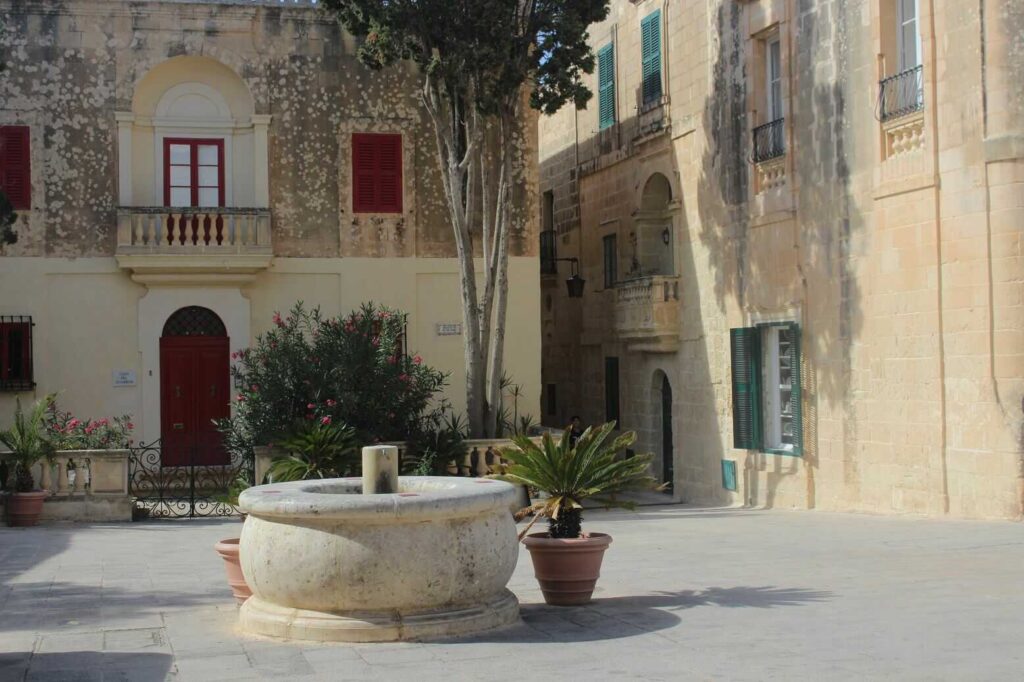
Mdina was the capital of Malta from antiquity to medieval times. It was formed after the Fall of the Western Roman Empire by surrounding part of the old city of Melita with fortifications.
The town was chosen because of its position–high on a hill, far from the sea and potential enemy ships in the middle of the island. Hence it could provide protection in case of an invasion. The new wall divided Melita in Mdina, the city, and Rabat, the outskirts. One can find out more about the history of the city at The Knights of Malta Museum.
Passing through the main gate and entering the citadel is like traveling back in time. Behind the tall walls, time flows at a different pace. The citadel is car-free and untouched by the bustle of the outside. The best way to enjoy its charm is to take a stroll along the maze-like alleys and admire the honey-colored old buildings.
Religion is essential in Malta. Next to each houses’ entrance, there’s a small icon meant to protect the family inside. The most important tourist attraction in Mdina is the Cathedral of St. Paul, an imposing Baroque church home to a painting of the Madonna from the 12th century.
Before leaving Mdina, Malta, stop at Fontanella Tea Garden for a homemade cake and the best view over the surroundings, up to the blue sea.
One might not believe it at first sight, but the city is still inhabited by around 250 people, most of them successors of the medieval nobles. Tourists are encouraged to keep silent in order not to disturb the day to day life. But Mdina becomes a true “Silent City” at night after the crowds are gone. By that time, one can have the entire city for themselves.
The easiest way to get to Mdina, without a rented car, is by bus. From the main station in Valletta, board a 51, 52, or 53 bus and get off 40 minutes later at Rabat 1 station. Go early in the morning or late in the afternoon to avoid the crowds and the heat.
Submitted by: Raluca from Travel With A Spin
The Lion of Lucerne
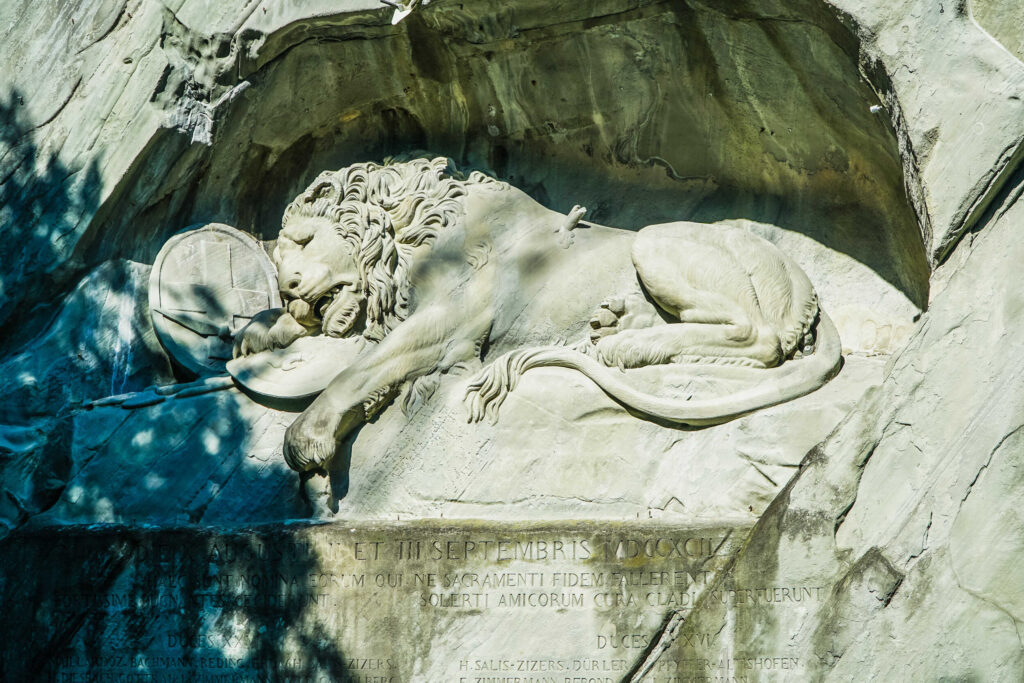
The world-famous stone carving known as the Lion of Lucerne will surprise you with its beauty and emotion. The sandstone sculpture of a dying lion pays homage to the Swiss Guard heroes who died in Paris in 1792, during the French Revolution. The men of the Guard stood protecting the palace behind the Tuileries, and they were all killed when revolutionaries stormed the palace.
Carved in 1821, the massive and majestic lion stands guard over the inscription under him. The names of the officers killed are listed to memorialize their bravery. One officer of the Swiss Guard, Karl Pfyffer, was on leave at home in Lucerne on the fateful day of battle. For years, he wanted to honor his fellow Guards. He headed up fundraising and found Danish artist Bertel Thorvaldsen to conjure a lion out of stone–the result is breathtaking.
When you visit, take time to admire this work of art from different angles and think about the Swiss who gave their lives in a foreign country. As the American writer Mark Twain wrote: “The Lion of Lucerne (is) the most mournful and moving piece of stone in the world.”
More than a million visitors make their way each year to admire this famous monument. You can find the Lion of Lucerne at Denkmalstrasse 4.
Submitted by: Sharon Odegaard from Exploring Our World
Jungfraujoch

Standing 3454 meters tall, the Jungfraujoch is a soaring Swiss mountain famous for its mountain railway and natural beauty. The Jungfrau Railway is an engineering marvel and a pioneering railway in the Swiss Alps. Before 1912, only highly skilled mountain climbers could reach the top of the Jungfraujoch. Thanks to the railway, ordinary travelers can experience the snow-covered landscape of the gorgeous mountains of the Jungfraujoch, Eiger, and Mönch.
The top of the Jungfraujoch is known as the ‘Top of Europe,’ and you can get there by boarding several trains. First, the Bernese Oberland Railway between Interlaken Ost station and Lauterbrunnen or Grindelwald, followed by the Wengernalp rack railway to Kleine Scheidegg. But the most stunning part of the journey is the ride on the Jungfrau Railway to the top. The Jungfrau Railway operates all year.
Tip: The Sphinx Viewing Platform at Jungfraujoch has the highest vantage point in Europe and the best view of the stunning Aletsch Glacier.
Things to do when you reach the top include exploring the Ice Palace, an ice museum within a tunnel 20 meters below the glacier, admire the plateau’s views and take part in activities such as sledding, snow tubing, snowboarding, and skiing.
Adventure seekers may want to stay longer to trek to Mönchsjochhütte, the highest-altitude hut in Switzerland, or hike the glacier on an organized tour. If this sounds too energetic, book a table at the restaurant or sit at the bar and sip hot chocolate while enjoying the breathtaking Swiss mountain views.
Submitted by: Christina from Travel2Next
Suomenlinna
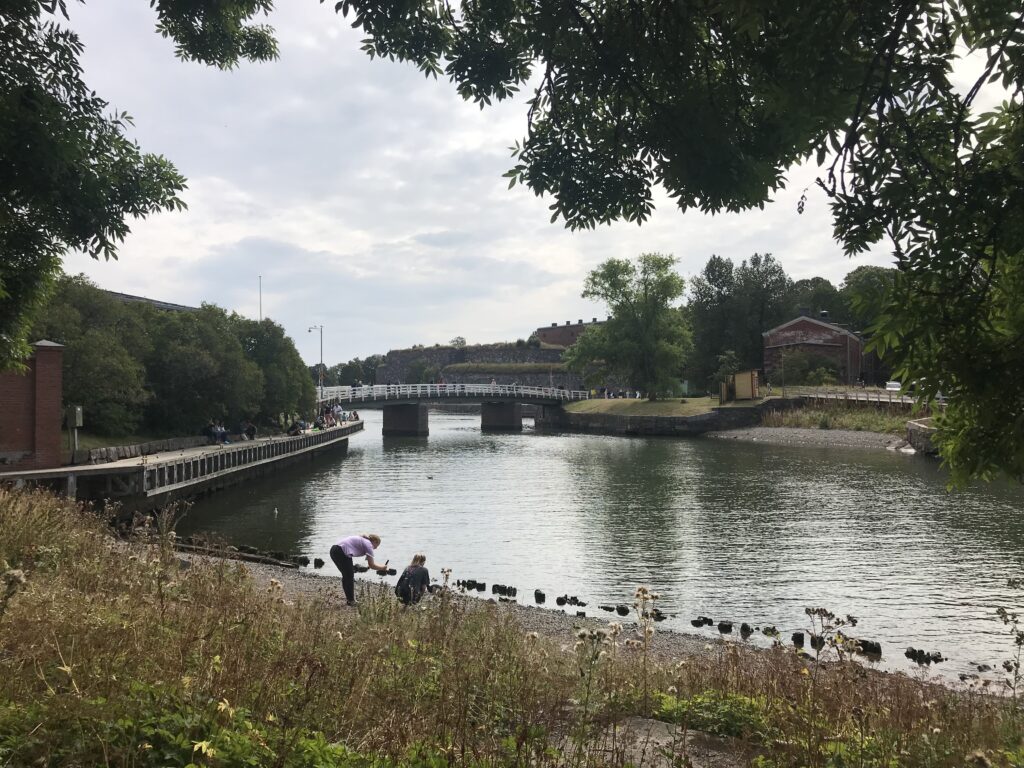
Suomenlinna is an Island fortress that is a short, 15-minute ferry ride from Helsinki city center. It was built in the mid-1700s, during the Swedish era, as a maritime fortress. Nowadays, it is a UNESCO World Heritage Site and a popular tourist attraction, especially in the summer, that allows visitors to escape the city’s hustle and bustle.
Spend your day walking through the historic town and along the original fortress walls on a beautiful summers’ day. The majority of the sites are seen while walking outside, so it is advisable to visit on a nice, sunny day.
Suomenlinna has several marked walking routes which can be followed to enjoy the many historical landmarks in Europe that are on the island. These are all marked with color-coded signs, and one of the most popular walks is the blue route which takes you to Suomenlinna center, King’s Gate, and Piper’s Park. There are also options for guided tours for those who wish to gain more insight into the island’s history.
There is no entrance fee for the island, but it is only accessible by ferry, which costs just over 2 euros. The ferry service regularly runs from Market Square over to Suomenlinna, and in the summer, it runs up until 2 a.m.
There are several places to eat on the island, but a great way to enjoy it is to take a picnic and sit on one of the many grassy areas and take in the beautiful architecture and views out over the water. This is a fantastic escape right in the middle of the beautiful city of Helsinki.
Submitted by: Luke Storey from Wild About BC
Sibelius Monument
Whether you are visiting Helsinki in winter or summer, make sure you add Sibelius Monument to your list of things to see. Jean Sibelius is Finland’s most famous composer, author of epic symphonies like the Karelia Suite, Finlandia, and the Kalevala, which contributed to shaping Finland’s national identity after its independence from Russia.
This is not the usual statue in honor of a famous person – in true Finnish style, Sibelius Monument is an abstract composition made of over 600 steel tubes, placed together resembling a wave. Sibelius was often inspired by nature when writing his music, so the incredible monument is like a giant pipe organ that can be played by the wind. After it was unveiled in the 1960s, it was criticized as too abstract, so Sibelius’s bust was added.
The monument is located in the Töölö neighborhood of Helsinki, about 20 minutes north of the city center, in a park on the water’s edge surrounded by nature. When visiting Sibelius Monument, make sure you stop for a break at Cafè Regatta located just next door, home to the best cinnamon buns in town!
Submitted by: Margherita Ragg from The Crowded Planet
Camp Westerbork
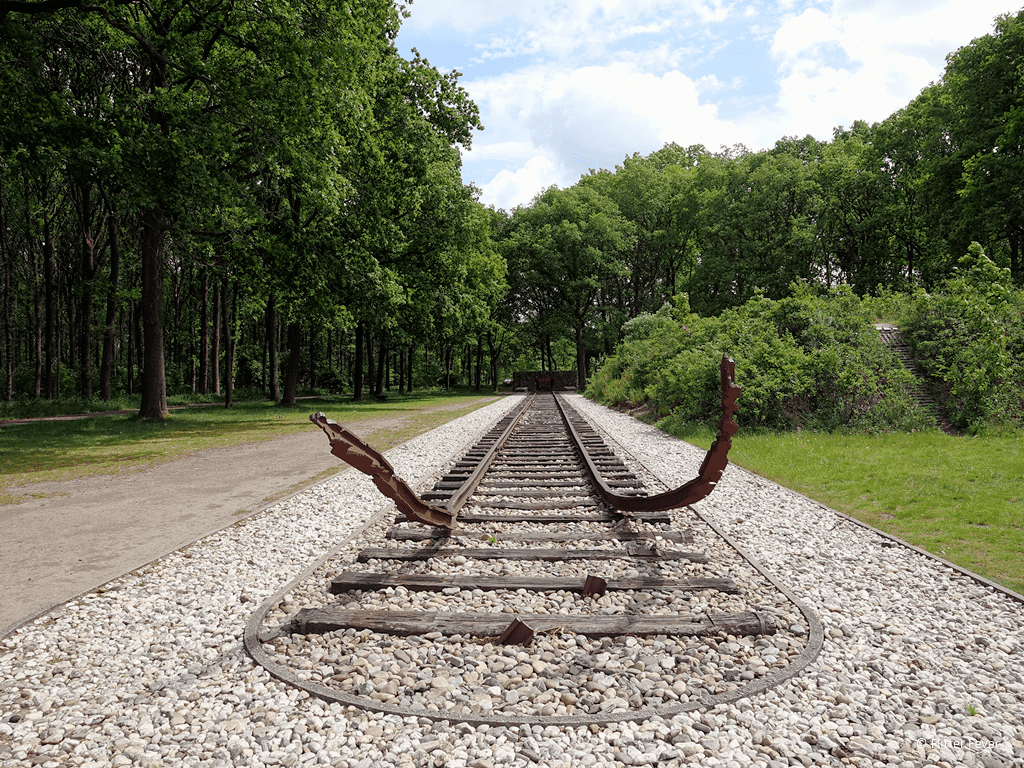
In 1939, Camp Westerbork was built as a refugee camp for Jews who fled Germany and Austria from the emerging anti-Semitism. Camp Westerbork is located in the province of Drenthe, in the northeast of The Netherlands, close to the border with Germany. Apparently, the camp was built there because Queen Wilhelmina did not want it close to her palace in Apeldoorn.
During World War II, Camp Westerbork became a transit camp. Jews, Sinti, Roma gypsies, and resistance fighters were put on train wagons to concentration camps like Auschwitz and Sobibor. Upon arrival, many wrote comforting cards to their loved ones while a terrible fate awaited them. Camp Westerbork gained the reputation as “the gateway to hell.” More than 100.000 victims passed.
After World War II, N.S.B.s, SS men, and other persons suspected of collaboration with the Nazis were imprisoned in Camp Westerbork. From 1951 to 1971, Camp Westerbork accommodated thousands of Moluccan families. After serving the Royal Dutch Indian Army in the Dutch Indies during World War II, they fled to The Netherlands. In the 60s and 70s, 14 large radio telescopes were placed on the terrain.
Camp Westerbork Memorial Center was officially opened by Queen Beatrix in 1983. Nowadays, Camp Westerbork and its surrounding forest attract 170,000 visitors per year. A movie with unique images of Camp Westerbork during World War II was registered by UNESCO in 2017. Camp Westerbork aims to keep memories alive of those who were imprisoned there. The outdoor area is open daily 10 a.m.- 5 p.m. for free entry, but the museum requires a ticket. From the parking lot to the camp is a 15 min walk.
Next to Camp Westerbork, Drenthe has a lot more to offer, like National Park Drentsche Aa. Here you can visit about fifty ancient so-called hunebeds (dolmen) that are older than Stonehenge and the Egyptian pyramids!
Submitted by: Elisa van Velzen from Flitter Fever
Brandenburg Gate
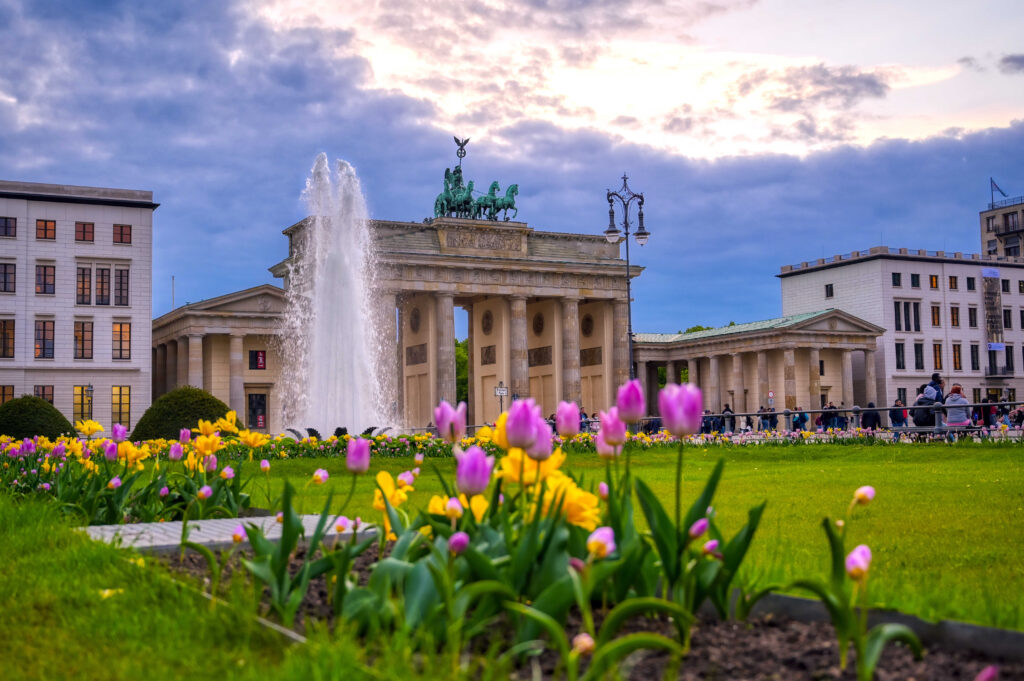
The majestic Brandenburg Gate is among the many iconic monuments in Germany’s capital city Berlin.
The 26-meter high monument was built between 1788 and 1791. After World War II, once the Berlin Wall was built, Brandenburg Gate was inaccessible from neither the east nor the west part of the city.
In December 1989, the wall finally fell, and more than 100,000 people came and celebrated Berlin’s reunion. Since then, the Brandenburg Gate is a true symbol for the reunited German capital.
The European monument is located at Pariser Platz, not far from the Memorial to the Murdered Jews of Europe and the Parliament. There’s even a metro station and an S-Bahn station directly at the Pariser Platz named “Brandenburger Tor.”
There’s a limited amount of things to do at the Brandenburg Gate. However, right next to it is the so-called “Room of Silence.” Its primary purpose is to provide everyone with an opportunity – no matter what color, religion, or physical condition – to remain silent and meditate to gain peace and strength or simply relax. It should therefore also be seen as a symbol of tolerance and embracement of all nationalities and ideologies.
The Pariser Platz itself is also a great place to hang around, relax on the benches and just watch everyday life.
Submitted by: Alina from World of Lina
Neuschwanstein Castle

Perched on the peak of a rocky hill, Neuschwanstein Castle is the 19th-century Romanesque Revival palace in Hohenschwangau, Bavaria, Germany.
Influenced by the Middle Ages’ romantic royal myths, King Ludwig II of Bavaria commissioned the palace as a refuge for himself and as a homage to his friend, the composer Richard Wagner. Ludwig compensated for the castle through his own fortune and substantial investments rather than using Bavarian public funds. The structure was designed as a personal sanctuary for the reclusive monarch, but the castle was opened to the paying public shortly after he died in 1886. Now, over one million visitors come to Neuschwanstein Castle per year.
Designed by theatrical stage designer Christian Jank, the castle’s construction took about 20 years. They could not salvage any of the original twin Medieval castles on the site into this construction. It was never fully completed, and Ludwig II spent less than 200 days in the castle before he passed away. However, it served as the inspiration for another famous castle, Disney’s Sleeping Beauty Castle.
Accessing Neuschwanstein Castle’s interior is only possible with a guided tour; sadly, no photos are permitted inside. After your tour, visitors can enjoy their Cafe & Bistro on the second floor or spend some time outdoors in the Ammergebirge nature reserve. Several points of interest are nearby, including the Marienbrücke Bridge, the Panoramablick Schwangau observation area, and the waterfall Aussichtspunkt Wasserfall.
Read More:
- Your Guide to Create Stunning Mixbook Travel Photo Books
- Your Guide to the Best Travel Essentials
- How To Make Every Trip To The Airport Stress-Free
- Your Guide to How to Start a Travel Blog
- The Best Travel Planner to Stay Organized
Eastern Europe
Auschwitz-Birkenau Concentration Camp
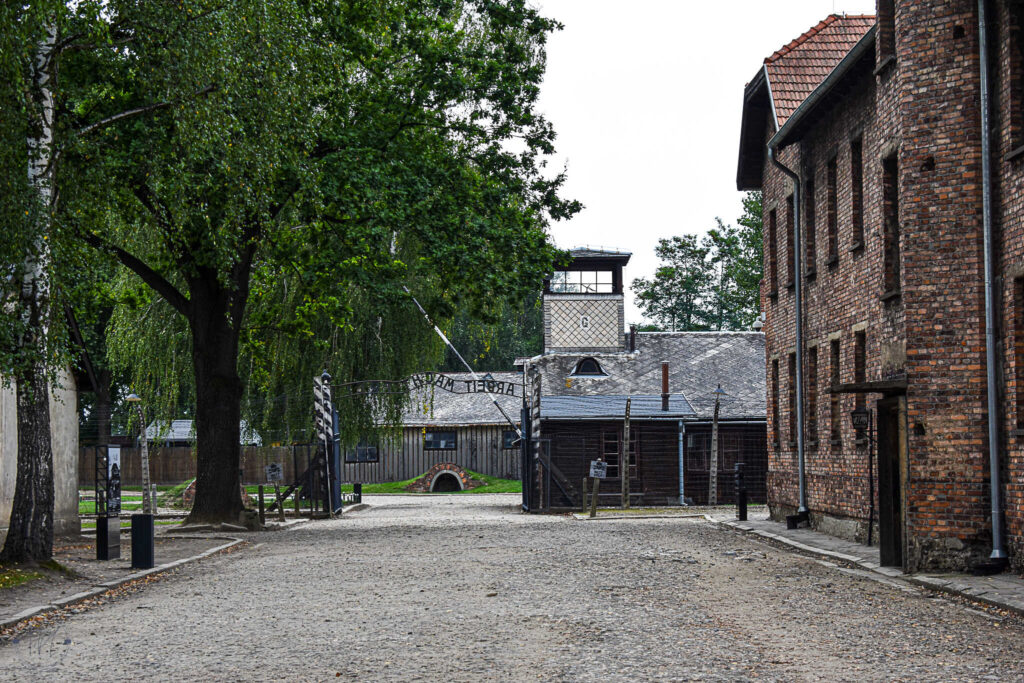
While not a happy place to visit, Auschwitz-Birkenau is a must on any Polish bucket list. Auschwitz-Birkenau was one of the largest concentration camps during WWII.
During the Nazi occupation, alongside the Jewish people, other “undesirable” people such as political prisoners, Slavic people, Prisoners of Wars, and homosexuals were also imprisoned in Auschwitz. Over this time, over 1 million people were murdered at Auschwitz-Birkenau.
The camp was liberated in 1945. As German forces left the camp, many buildings and documents were destroyed. However, many buildings still stand, and others have been replicated to understand how the camp looked.
Auschwitz-Birkenau can be reached by train from Kraków; the train takes around 2 hours to Oświęcim. The camp is then an easy, 20-minute walk from the train station. If you would rather not take public transport, there are plenty of organized group tours available from Kraków.
Auschwitz-Birkenau is open 7 days a week all year round except for Christmas day. The opening times do vary according to the time of year, and the latest entrance time is 90 minutes before closing time, make sure to visit the website before your visit.
If you make your own way to the camp, it is suggested to buy tickets online in advance. It doesn’t need to be weeks in advance; it can be the day before. If you have not purchased tickets online, you will need to arrive 30 minutes before opening time.
When visiting Auschwitz-Birkenau, please be respectful. When visiting the exhibitions and the gas chambers, show respect and follow instructions given by the staff.
Submitted by: Fiona Boyle from Travelling Thirties
Wawel Castle
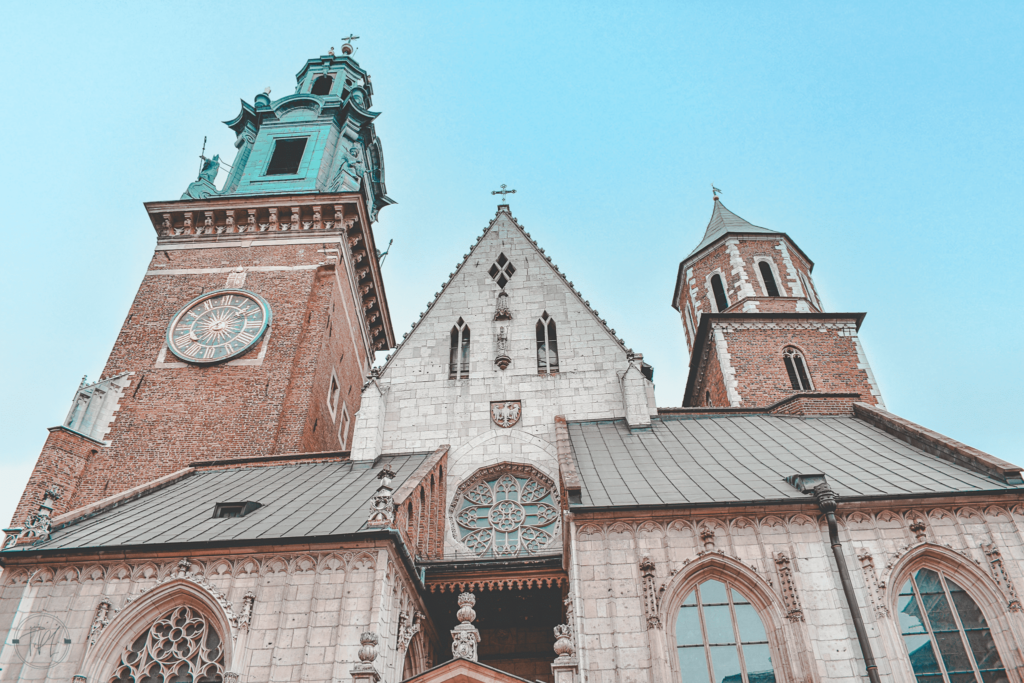
The very first UNESCO World Heritage Site in the world, Wawel Castle in Kraków, Poland, is among the most famous landmarks in Europe. It’s an immense castle complex that gives a snapshot of Poland’s long and fascinating history. Also known as Kraków Castle, it’s situated on Wawel Hill, overlooking the Vistula River, and continues to be one of the most significant tourist stops in the city.
In the 9th century, the hill housed a church, a keep, and a residential tower, then later a cathedral in the 11th century. The current Wawel Castle was constructed over several centuries, with the oldest parts built in the 13th century. Much of what you see today is from a reconstruction period in the Renaissance style due to fire damage. The castle was the residence of the Polish kings, as well as a defensive fortification.
The castle now has five different museums within the Wawel Royal Castle, each of which requires its own entry ticket available for purchase on their website.
Wieliczka Salt Mine
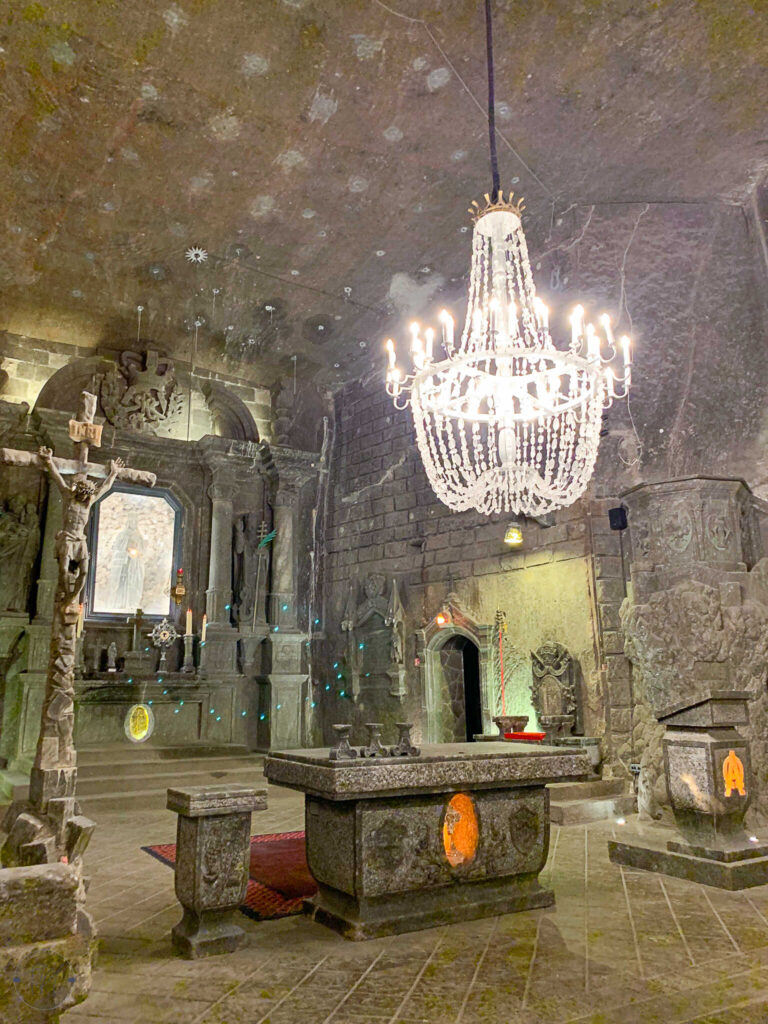

Wieliczka Salt Mine is a former salt mine in Wieliczka, Poland, now a museum. The UNESCO World Heritage Site was among the oldest operational salt mines until it phased out actively mining salt in 2007. There are many underground streams and caverns of different sizes, and the biggest are now used for concerts and events.
The Wieliczka Salt Mine was established at the end of the 13th century to extract rock salt discovered underground for the Kraków royalty. With the deepest cavern 327 meters below the earth, the salt mine is a massive underground network with 9 different levels and 245 kilometers of pathways and galleries.
It’s an incredible place—not only because of its size but also due to the salt-carved artworks that attract so many tourists. Within the mine, there’s a gorgeous cathedral and a re-creation of Leonardo da Vinci’s The Last Supper, all carved into and from out of salt.
You can schedule your tour online to visit the Wieliczka Salt Mine; the group tour will last about 3 hours, and for an additional fee, you can arrange a private tour guide. You can also purchase tickets to walk around the mine on your own, but you’ll need to choose a scheduling time. There are also many guided tours from Kraków that will take you there. Make sure to stop in their gift shop at the end of your tour to take home some incredible gifts made from the mine’s salt.
Schönbrunn Palace

Schönbrunn Palace in Vienna, Austria, was the primary summer residence for the Habsburg monarchy from the 18th century to the dissolution of the royal family in 1918. Although the property was initially used for recreational hunting and a lodge, today’s palace was built in the Baroque and Rococo styles in the 1740s for Empress Maria Theresa; she received the estate as a wedding gift. The original lodge’s expansive gardens were connected to the palace and adapted to accommodate the royal household’s preferences.
Throughout its 1,441 acres of land, the palace complex has many facilities, including the Schönbrunn Tiergarten – the oldest zoo in the world in continuous service – the Children’s Museum and several gardens. Among the most noteworthy garden features is the Glorietta, a large reception room and viewing platform. The residence itself is imposing in its grandeur and ornate rooms, occupying 7,300 square meters of floor space.
If you’re visiting Vienna, the easiest way to get to Schönbrunn Palace is by taking the U4 underground, the 10 and 60 tram, or the 10 A bus and stopping at Schönbrunn station. Once you arrive, you can buy tickets, or there are several different entrance ticket combinations for purchase on the palace’s website. The Palace Park is free to enter, but all other attractions require a ticket.
If you’re visiting Austria in the winter, Schönbrunn Palace hosts one of the best Austrian Christmas markets right in its front courtyard!
Parliament of Budapest


The Hungarian Parliament Building is among the most magnificent buildings in Budapest. It’s home to the National Assembly of Hungary, which formed after the fall of the Communist regime. The building was constructed between 1885 and 1902 and is located on the Danube River’s Pest side.
Designed by architect Imre Steindl, who also handled the New Town Hall in Budapest and the St Elisabeth Cathedral’s remodeling in Košice, Slovakia, the building is an excellent representation of Gothic Revival architecture and the Renaissance Revival dome. Construction was completed in 1902.
Steindl included several symbolic elements in his design. There are 365 towers on the outside facade, commemorating every day of the year, and the dome reaches a height of 96 meters, representing the year 896 when Hungary was founded.
Official tours are open to the public and available to purchase online but are limited when Parliament is in session. You’ll have the opportunity to see the Grand Staircase, which has the symbolic 96 steps. The Crown of St. Stephen, the Holy Crown of Hungary, is displayed in the Dome Hall and several other areas inside Hungary’s largest building.
For another view of the Hungarian Parliament Building, make sure you take a cruise of the Danube River at night for an incredible view of the building!
Buda Castle

Overlooking the Danube River from the top of one of the many hills of the city, Buda Castle in Budapest, Hungary, is breathtaking. Formerly the royal home for the Kings of Hungary, Buda Castle has a turbulent history–the castle has been designed, dismantled, and rebuilt repeatedly.
Explore the Hungarian National Gallery, the Széchényi National Library, the Sándor Palace, and the Budapest History Museum, all housed within the palace, or see the Mace Tower near the gate of Ferdinand. You can also wander the elaborate gardens on the grounds.
Better yet, take in breathtaking views of the city from various places at the castle. Take in the view from the castle’s courtyard, or buy an admission ticket for the National Gallery of Fine Arts, which allows you to catch a famous perspective from the dome’s terrace.
The palace sits atop Várhegy–Castle Hill–overlooking the Danube River that separates Buda from Pest, the city’s other half. The Danube divides the castle from the mainland, which means the only way to get to the castle is to reach the top.
Many visitors take the Buda Hill Funicular–either one way or round trip–from Clark Adam Square up the hill to the castle. You can also climb or take the stairs on the steep hill from the Chain Bridge. If you want to walk even half the trip, take the Buda Hill Funicular to Buda Castle and then head downhill afterward. That way, you’ll have the opportunity to enjoy both views.
Franja Partisan Hospital
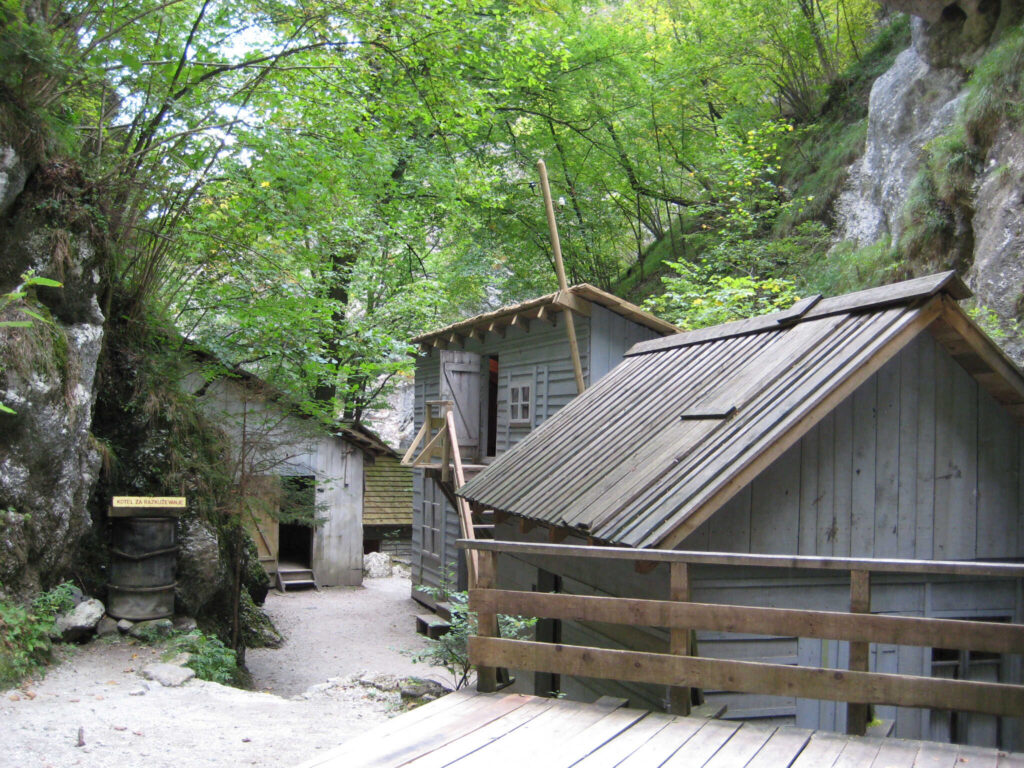
Franja Partisan Hospital is one of the interesting must-see attractions when you visit Slovenia. During World War II, the hospital was kept a secret by the Slovene Partisans to tend to wounded soldiers from the Allied Powers and Axis Powers.
The armed forces of Nazi Germany tried to locate the hospital, which was built in rugged terrain. But despite several attempts, the Nazis never found it. To preserve its secrecy and the hospital’s clandestine operations, patients were blindfolded as they were transported to and from the hospital.
Now, Franja Partisan Hospital, found near Cerkno, is a UNESCO World Heritage museum. The hospital facilities sit in a gorge, which is, in itself, a breathtaking sight. The easiest route will be to come from Cerkno and go through Idrija or Selška valley to get to this hospital museum. About 5km from Cerkno, you will get to Dolenji Novaki, and signs that will lead you to the hospital are posted. To get to Cerkno from Ljubljana, take the most economical way, which is by bus. This will take you approximately 1 hour and 45 mins.
Although having a tour guide will be helpful, you can opt for a self-guided tour. Doing so will be an excellent opportunity to take mindful walks and immerse yourself in your surroundings. You can spend about an hour exploring the area. Read through the stories and learn more and appreciate the history behind the hospital.
Submitted by: Lucile Hernandez Rodriguez from LucileHR
Bled Island

Ever seen a photo of an idyllic mountain lake with an island in the middle and a little church on it? That, my friend, was Lake Bled in Slovenia. With the Julian Alps as a backdrop, a picturesque island in the middle of the lake, and a marvelous medieval castle perched on top of a cliff, Lake Bled really is stunning.
While there’s plenty to do and see, no trip to Lake Bled is complete without visiting Bled Island. A place of immense beauty and home to many superstitions. To get to the island, you can either rent a paddleboat, a S.U.P., or take the Pletna boat, the Slovene equivalent of a Venetian gondola.
The most recognizable icon of the island is the Church of St. Mary, which was built towards the end of the 17th century and stands in the place of an old pagan temple. 99 stone steps lead up to the church, and traditionally the groom has to carry the bride up this staircase, an effort worth every drop of sweat since it is believed that couples who get married on Bled Island will have a lifelong marriage full of love.
You can see the 52 meters high bell tower, also referred to as the Wishing tower, from all sides of the lake. Ringing the bell is believed to bring good luck, and pulling the cord three times will make your wish come true.
Submitted by: Tom & Zi from Craving Adventure
Walls of Dubrovnik

One of the most remarkable historical landmarks in Europe is undoubtedly the Dubrovnik Walls in Croatia.
Together with Dubrovnik’s Old Town, they were listed on the UNESCO World Heritage List in 1979 and now attract visitors worldwide.
This historic attraction dates back to the 8th century, and even the earthquake of 1667 could hardly damage this thick wall.
Today, it is the best-preserved medieval fortification in Europe and one of the world’s most famous.
The imposing city wall of Dubrovnik surrounds the entire city center with a length of about 2 kilometers and spoils visitors with plenty of fantastic views while walking the complete tour.
For that, you should plan at least 1-2 hours, depending on how many breaks and photo stops you need.
The wall opens for visitors daily from 08:00 to 19:30, and the entrance isn’t cheap, but you’re able to save some money with the Dubrovnik Card.
It’s a combination ticket, which includes as many other museums and attractions in Dubrovnik.
You can explore the old town or enjoy any of the fantastic beaches in Dubrovnik.
There is a wide range of lovely accommodations, such as the beautiful Hotel Moore with a pool and views of the beaches in Dubrovnik.
Submitted by: Martina from Places of Juma
Read More:
- Your Guide for One Day in Trogir, Croatia
- The Best Things to do in Šibenik, Croatia
- The Best Beaches in Šibenik, Croatia
- The Most European Cities in North America
Mostar Bridge
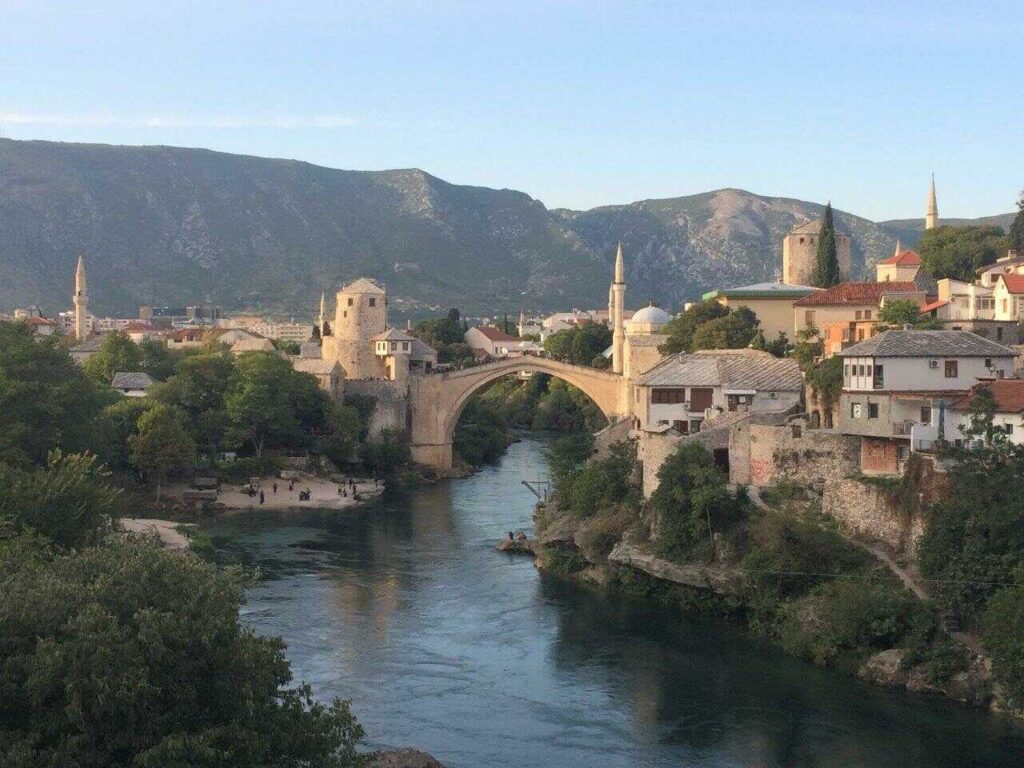
One of the most beautiful bridges in all of Europe, the Old Bridge in Mostar also features a dramatic and occasionally brutal history. In the war that followed Yugoslavia’s dissolution in the early ’90s, Mostar was one of the main focal points of the Bosnian War for political independence in Bosnia and Herzegovina.
The bridge is an Ottoman masterpiece initially built in 1566 and stood for over 400 years before being destroyed by bombing in 1993. In 2004, it was rebuilt using original materials and in 2005 made it onto the UNESCO World Heritage List. Also, since the word “most” is actually just the Bosnian term for “bridge,” the name Mostar Bridge is somewhat redundant. Nonetheless, that is the most common term used to describe it, along with Stari Most (Old Bridge).
As fascinating as the bridge’s history is, most travelers come to experience its incredible beauty. As the focal point of the city, many exceptional Mostar Bridge viewpoints offer entirely different angles and photographic alternatives, some of which even allow you to avoid the crowds.
Although Mostar is a popular day-trip destination, it really pays to spend at least one night to get a look at the iconic bridge at different times of the day and in other lights. Sunrise and sunset, in particular, provide fantastic photo opportunities.
Whether you are most interested in visiting a popular landmark of Bosnia and Herzegovina’s grand and bloody history or simply drawn to gorgeous viewpoints, Mostar is an essential stop on any Balkan itinerary. It is just 2 hours from Sarajevo by either bus or incredibly scenic and more comfortable train journey.
Submitted by: Dean and Laynni from Routinely Nomadic
Mykonos Windmills
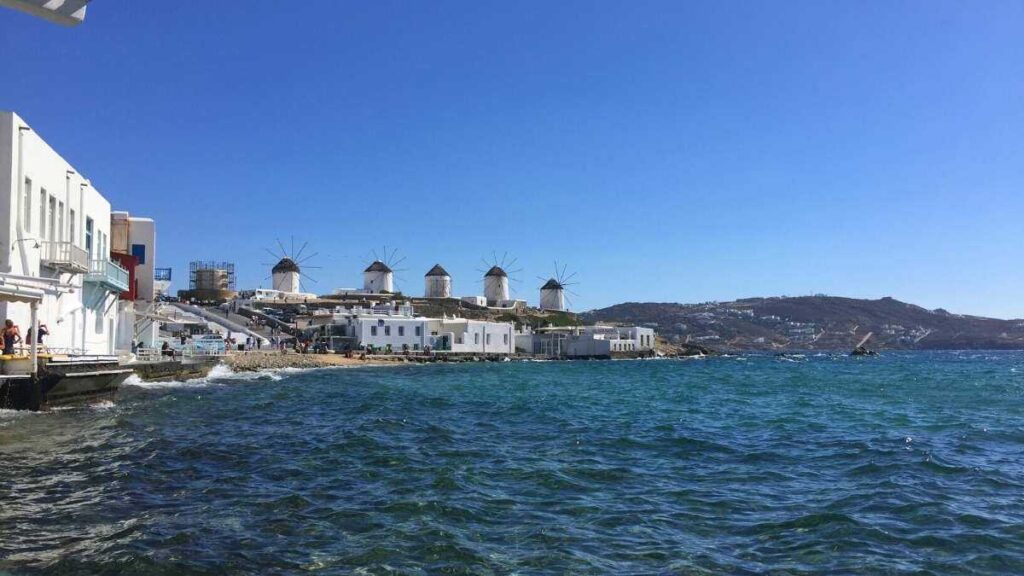
When you travel to Mykonos, the iconic windmills on Chora Hill are the first thing you’ll see as you arrive in the harbor of Alefkandra. They stand facing north, where the island’s winds are strongest through most of the year. These stunning strictures overlook the old port, Little Venice, and harbor.
The windmills are circular, whitewashed, and capped with straw. They were built by the Venetians’ in the 16th century, but they’ve been expanded, and construction on them continued into the early 20th century.
The windmills were primarily used to mill wheat which was a key source of income for the island. Similar windmills are found all over the Cyclades islands, but they’re no longer used for wheat production. In fact, one of the windmills is now a museum, and one has even been converted into lodging.
You can walk to and around the windmills; they’re beautiful to get a closer look and snap some photographs. Since they can be seen far and wide in the surrounding town, you should also make a point to enjoy the view of the windmills from Little Venice and the beaches around the old port.
From the moment you approach Mykonos to the postcards, photographs, and memories that you’ll take with you – the windmills of Mykonos are an image you won’t forget.
Submitted by: Derek and Mike from Robe Trotting
The Acropolis of Athens

At the heart of Athens, Greece, the ancient Acropolis is one of the most famous landmarks in Europe. It was the most important religious center of ancient Greece, known by the name of Cecropia in ancient times. The remains of the Acropolis, which date back thousands of years, can still be seen today.
The city-state of Athens began as a small settlement on the rocky hill that dominates the Acropolis. Throughout the centuries, the area was expanded and developed into a great city. The Acropolis itself is an imposing, historic citadel situated on a rocky peak overlooking the town, consisting of several structures erected in the 5th century B.C., for Athens’ patron goddess–Athena.
The most famous structures of the Acropolis are the Parthenon, a massive marble temple devoted to Athena. Other noteworthy buildings include the Propylaea, the site’s giant entryway, another temple, Erechtheum, constructed on the site where the holy olive tree of Athena grew, and the Temple of Athena Nike.
The Acropolis is easiest to access by metro; remember to schedule an early entry and purchase tickets online to avoid crowds and sun or visit late in the afternoon to miss both.
Bran Castle
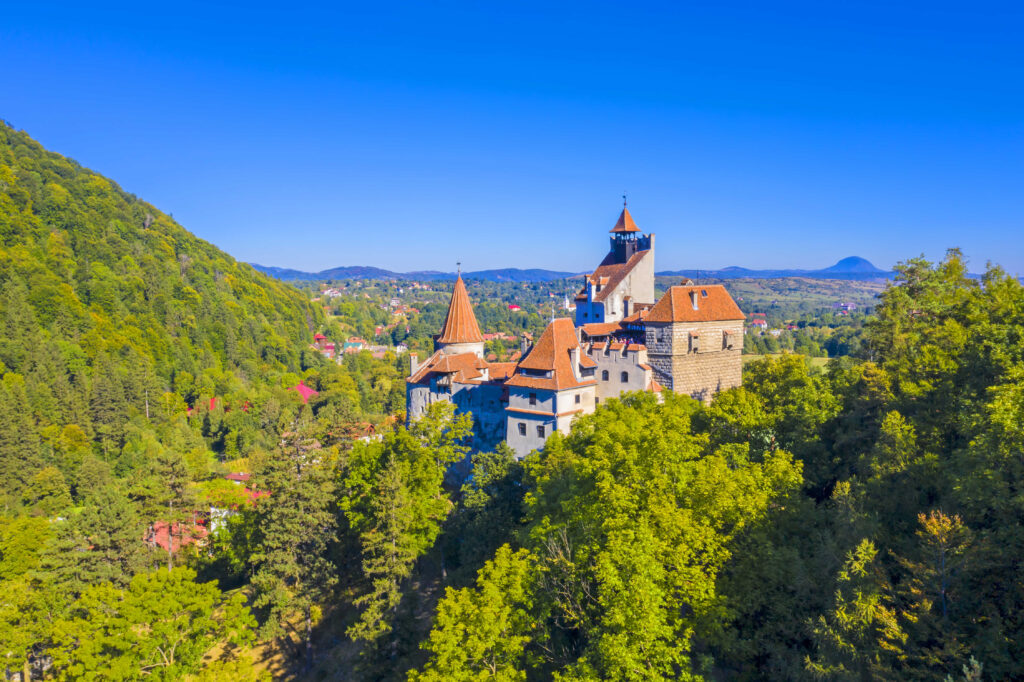
Bran Castle is a medieval fortress located in the small town of Bran and is one of the most popular tourist attractions in Romania. The castle is situated on the Transylvania and Wallachia regions’ historical borders and is best known for its association with Vlad III the Impaler, better known as Dracula.
Hidden among the thick Romanian forest, Bran Castle had been the ideal place for Vlad/Dracula’s creepy castle. Although author Bram Stoker never stepped foot in the castle built in 1377, he captured it as the backdrop for his novel Dracula in the 19th century. It has since become an iconic tourist attraction with fans of the book or films inspired by it. The famous literary vampire is inspired by Vlad Tepes, also known as Vlad the Impaler, the real ex-Romanian dictator who executed his enemies with shocking methods.
In the 20th century, Bran Castle was used as a home for Queen Marie of Romania, who donated the estate to the town. When you visit the castle, you can scale the twisted towers and explore many of the 60 rooms that still feature furniture and art that belonged to Queen Marie.
Sighisoara Citadel
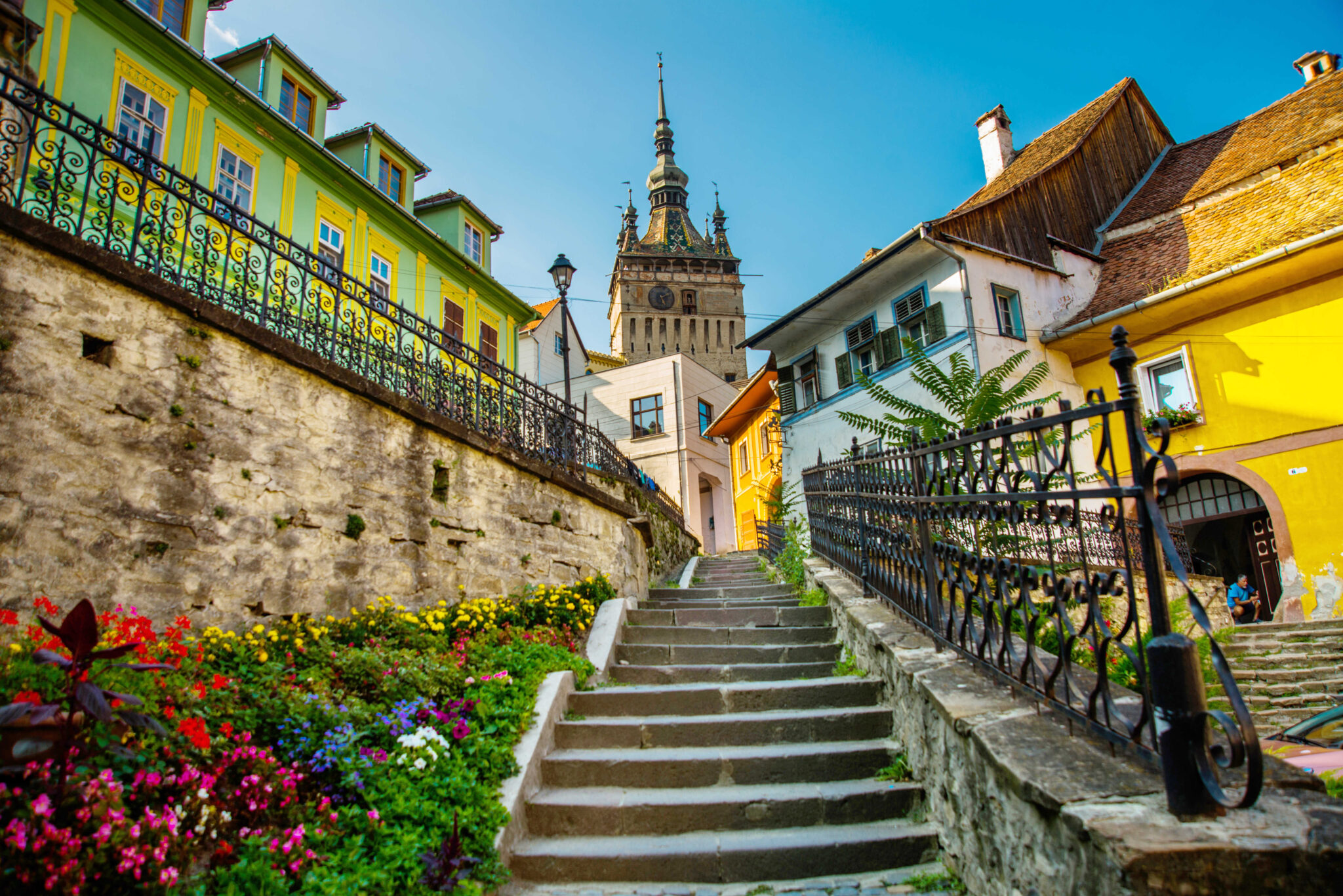
The old town and citadel in Sighisoara are UNESCO World Heritage Sites in the heart of Romania. The citadel has a fascinating history; it was first built by 12th-century Saxons and is Vlad Dracula’s birthplace. Vlad Dracula is also known as Vlad the Impaler, who was one of the most important rulers in Wallachian history and, as a result, a national hero of Romania.
The best ways to get to Sighisoara are either by train or car. The city is a three-hour train journey from Cluj-Napoca across the Transylvanian Plateau. If interrailing a night train from Budapest or Vienna is possible.
Sighisoara is an exceptionally well-preserved citadel with lots of interesting walls, towers, and gates to explore. The most prominent and decorative part of the citadel walls is the clock tower which is the main entrance to the complex. There are also many churches inside the walls, including the church on the hill at the highest point. The other buildings throughout the historic center are very colorful and pleasing to the eyes and camera.
To fully appreciate a visit, a paper map is available from the tourist information center. The traditional food here is excellent too, Romanian soups are very hearty and a meal in themselves. If staying overnight, the sunrise is fantastic to watch from many parts of the fortress.
Submitted by: R.J. from R.J. on Tour
Cappadocia
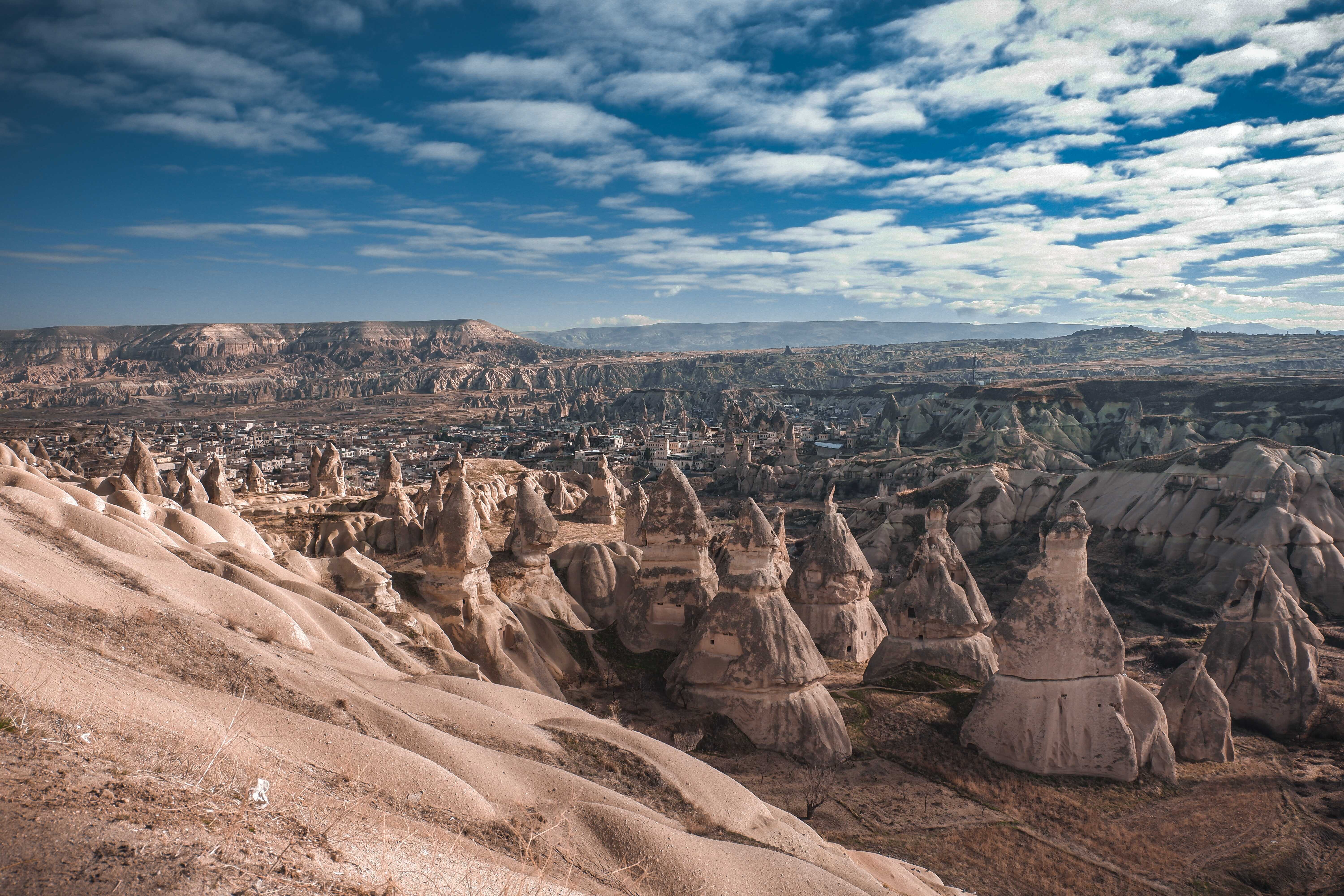
Cappadocia is one of Turkey’s most famous sites with its rich history and well-known geological forms. You can reach Cappadocia both from the capital, Ankara, or the vivid city of Istanbul. The best way to get to Cappadocia from Istanbul is by flying or traveling by night bus.
Göreme Open Air Museum takes you back to Roman times when the first settlers arrived in the area. You can also explore four different underground cities: Derinkuyu, Kaymakli, Gaziemir, and Ozkonak. Another viral activity in the area is hot air balloon flights. They start almost every morning at sunrise from Göreme. You can book your places online through various companies.
Besides the tours, you can walk among the cave houses carved in the rocks in most settlements, visit the cave churches, or observe the Fairy Chimneys, a UNESCO World Heritage Site with natural rock-forms in the soft volcanic material resembling tall, chimney-like shapes just outside of the cities.
Make sure you take sunscreen and hats with you. The weather is hot during the summer months. If you want to bring the most out of your visit, the best to take part in a day tour so you won’t miss out on any famous sites.
Submitted by: Katalin Waga from Our Life, Our Travel
Old Town Tallinn
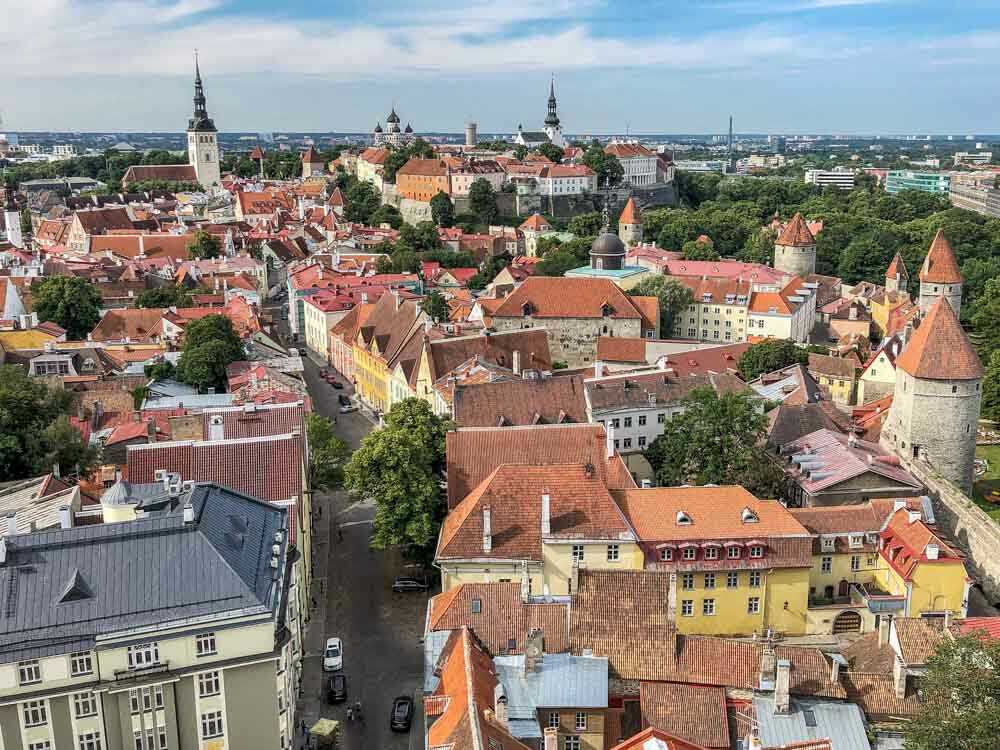
It’s hard to describe Tallinn’s Old Town center without using tired adjectives like “charming,” but it is indeed that. The first fortress was built there in 1050. What followed was successive waves of occupation from Germans, the Swedes, the Russians, the Germans again, and yet again the Russians, before Estonia finally achieved its independence in 1990.
Tallinn is fortunate because it was never entirely flattened by all of that occupation, and it even survived World War II damage intact. Old Town Tallinn is now a UNESCO Heritage walled city. It’s like an open-air museum with cobbled streets, narrow lanes, and fantastic views.
Old Town is located smack in the center of Tallinn and is walkable from the train station, cruise dock, and all of the major tourist hotels.
Some of the best things to do in Old Town Tallinn include climbing the 232 steps of the St. Olaf Church tower. From the top, you’ll get great views of the whole city and the Gulf of Finland. Stroll up to the top of Toompea Hill for yet more views of Old Town’s cute red rooftops. Also, make sure to take a free walking tour, which runs three times daily from the tourist office in Old Town, or even tour the Bastion Passages, which are passageways carved into the city’s stone walls.
Submitted by: Carol Guttery from California Crossings
The Kremlin
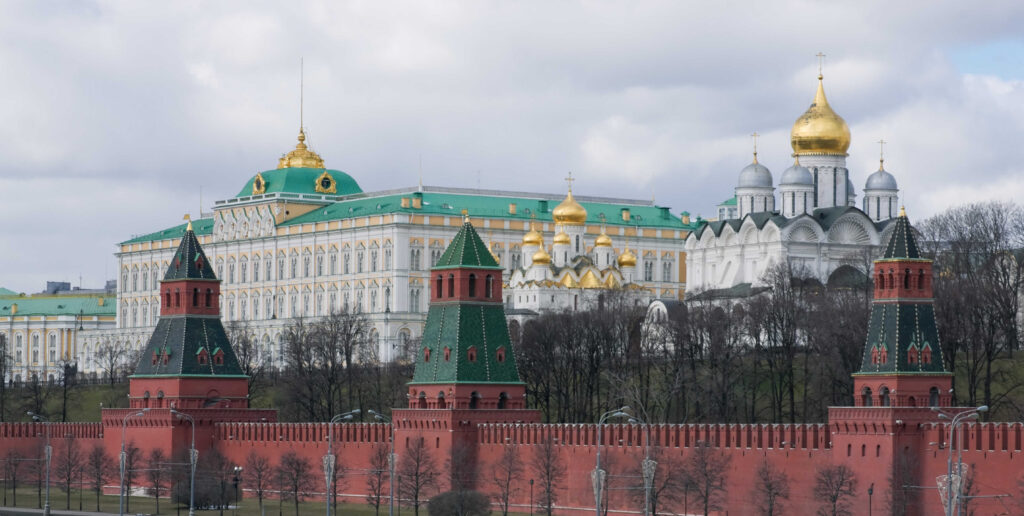
If Moscow is the most important place in Russia, then the Kremlin is the most important place in Moscow. The Kremlin consists of several palaces, cathedrals and also houses the office of Vladimir Putin. It is the center of Russian politics and religion, and what happens in the Kremlin affects every person living in Russia.
The Kremlin is a UNESCO World Heritage Site due to its historical significance and ties to Russian culture. Historians trace the origin of the Kremlin back to 1331.
For visitors, the Kremlin should be on top of your list of things to do in Moscow. Inside the Kremlin walls, you’ll find two of the city’s most impressive monuments: the Tsar Cannon and Bell–the world’s largest. After snapping a picture with these famous European landmarks, proceed to Cathedral Square, where you can visit the Kremlin’s stunning cathedrals. The cathedrals inside the Kremlin are covered in stunning frescoes and icons from floor to ceiling.
You can also visit the Armory and Diamond Fund buildings to ogle at the royal arsenal, crown jewels, and Fabergé eggs. The Kremlin grounds are enormous and features immaculately kept gardens, and you could easily spend half a day here exploring its treasures. If you’re in luck, you might even spot Putin arriving at his office in a helicopter!
The Kremlin is located adjacent to the Red Square, right in the center of Moscow. Getting there by metro is very convenient. The closest metro stations are Biblioteka Imeni Lenina or Ploschad Revolyutsii.
As the most famous landmark to visit in Moscow, it can get busy. Buy your entrance tickets online to avoid spending most of your time lining up for them.
Submitted by: De Wet & Jin from Museum of Wander
Moscow Metro
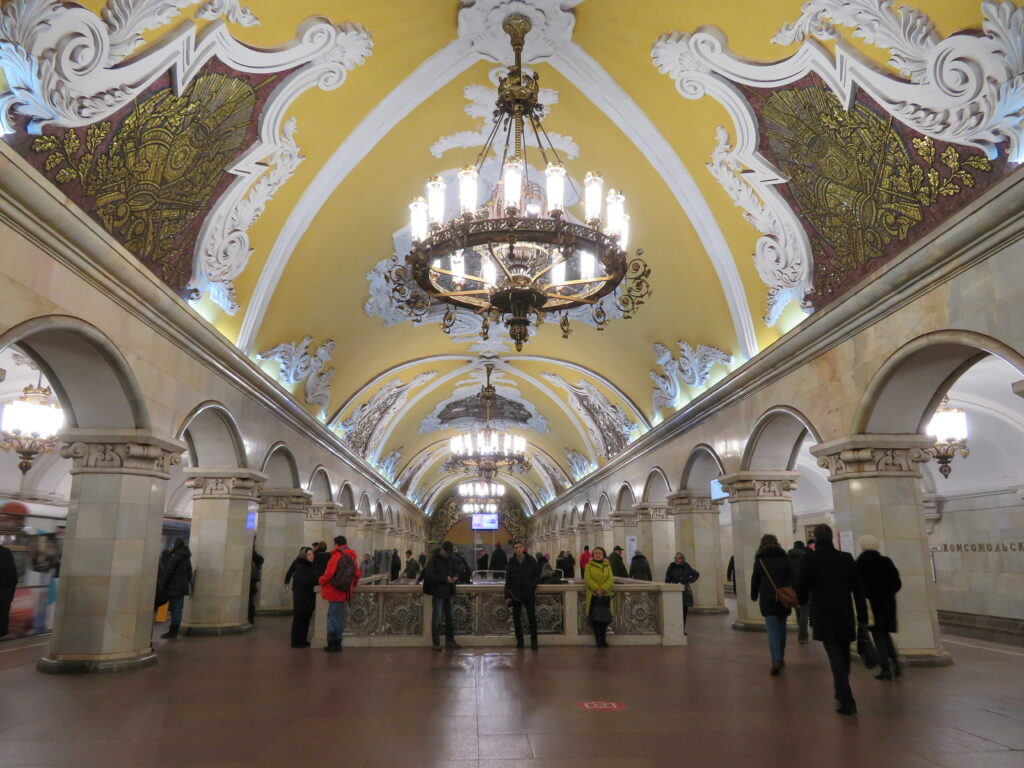
The Moscow metro is not only one of the most efficient metro systems in the world, but it also one of the important historical landmarks in Europe. What makes the Moscow metro into a monument is not necessarily its age, as construction started in 1933, but the vision that it represented. For many years, the Moscow metro embodied an ideology that divided Europe into a capitalist west and communist east.
As the Soviet Union’s growing capital, Moscow needed a cheap way for laborers to move around the city. Stalin wanted it to become more than a means of transport, though. The Moscow Metro was to become the palaces of the people, and the metro stations were built to showcase the superiority of socialism.
The result was extravagant stations made from marble and full of Soviet symbols, chandeliers, statues, bas reliefs, mosaics, and other artworks. Each station was carefully designed and had its own themes, such as the agricultural developments in the Soviet Union, technological advancement, Soviet professions, the Russian revolution, and World War II.
As a result, there is no other incredible landmark in Europe that tells the story of its communist history and the cold war so well than the Moscow Metro. The stations are beautiful, but there is more. Several were built as deep under the ground as possible to serve as nuclear bomb shelters. It’s still possible to see the thermic doors that were to protect the people of Moscow.
There are many guided tours to the Moscow Metro, but it is also relatively easy to explore it on your own, making it one of the cheapest things to do in Moscow. All you need is one ticket that will cost you less than a dollar, and as long as you don’t exit a station, you can stay underground as long as you like. Obviously, not all stations are as opulent as those built during Stalin, but it could still take up half a day to see the most beautiful Moscow Metro stations.
Submitted by: Ellis from Backpack Adventures
There are so many famous and lesser-known, yet nonetheless captivating, sights to see across the continent. Which of these famous landmarks in Europe have you visited?

